The architecture of the 20th century, which spans the years 1900 to 1999, is a collection of overarching modernism that has taken hold, changed, and evolved in different forms around the world. Shaped by the Industrial Revolution, technological advancements, social changes, and aesthetic pursuits, 20th-century architecture developed with innovative construction materials and techniques like concrete, steel, and glass. The architecture of the 20th century encompasses three phases, all of which fall into the category of ‘modernism’:
- Fathers of Modernism: Approximately 1900-1920
- Modernism (also known as New Building or Classical Modernism): Approximately 1920-1968
- Postmodernism: From around 1968 to the present
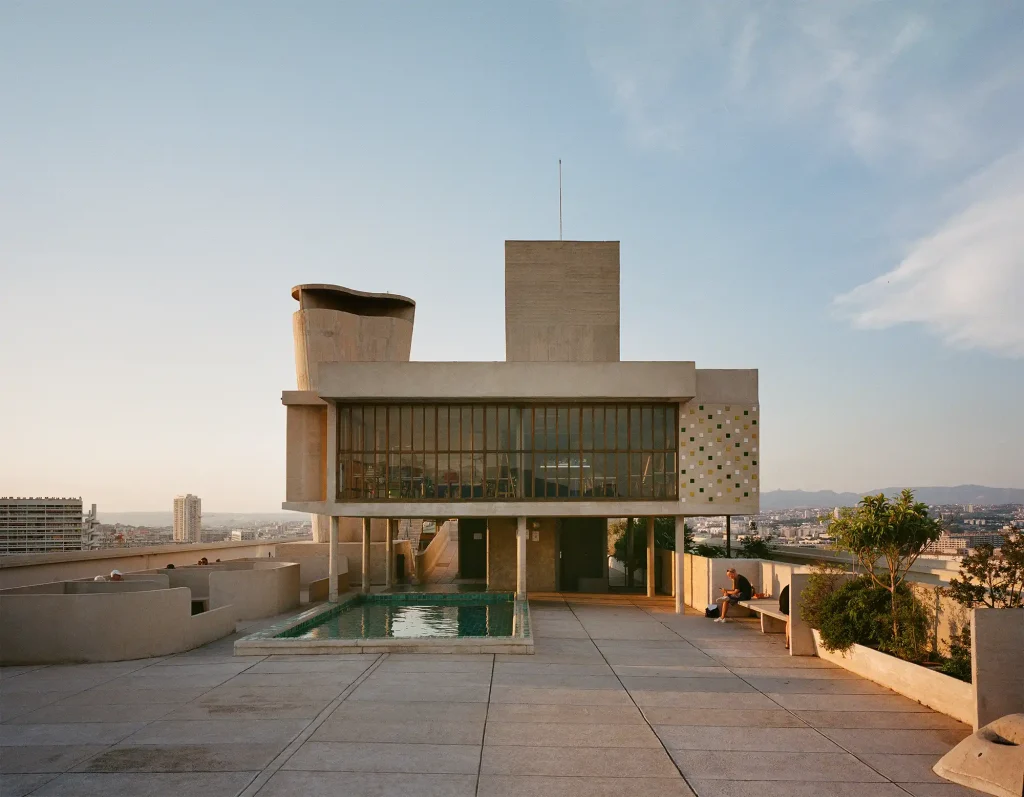
Each of these phases includes many different architectural movements that closely follow each other and often overlap, such as Expressionism, Futurism, Art Deco, Bauhaus. The 20th century architects who guided and interpreted these architectural styles designed groundbreaking projects that are still recognized today.
Here are the 15 most famous architects of the 20th century:
Frank Lloyd Wright (8 June 1867 – 9 April 1959)
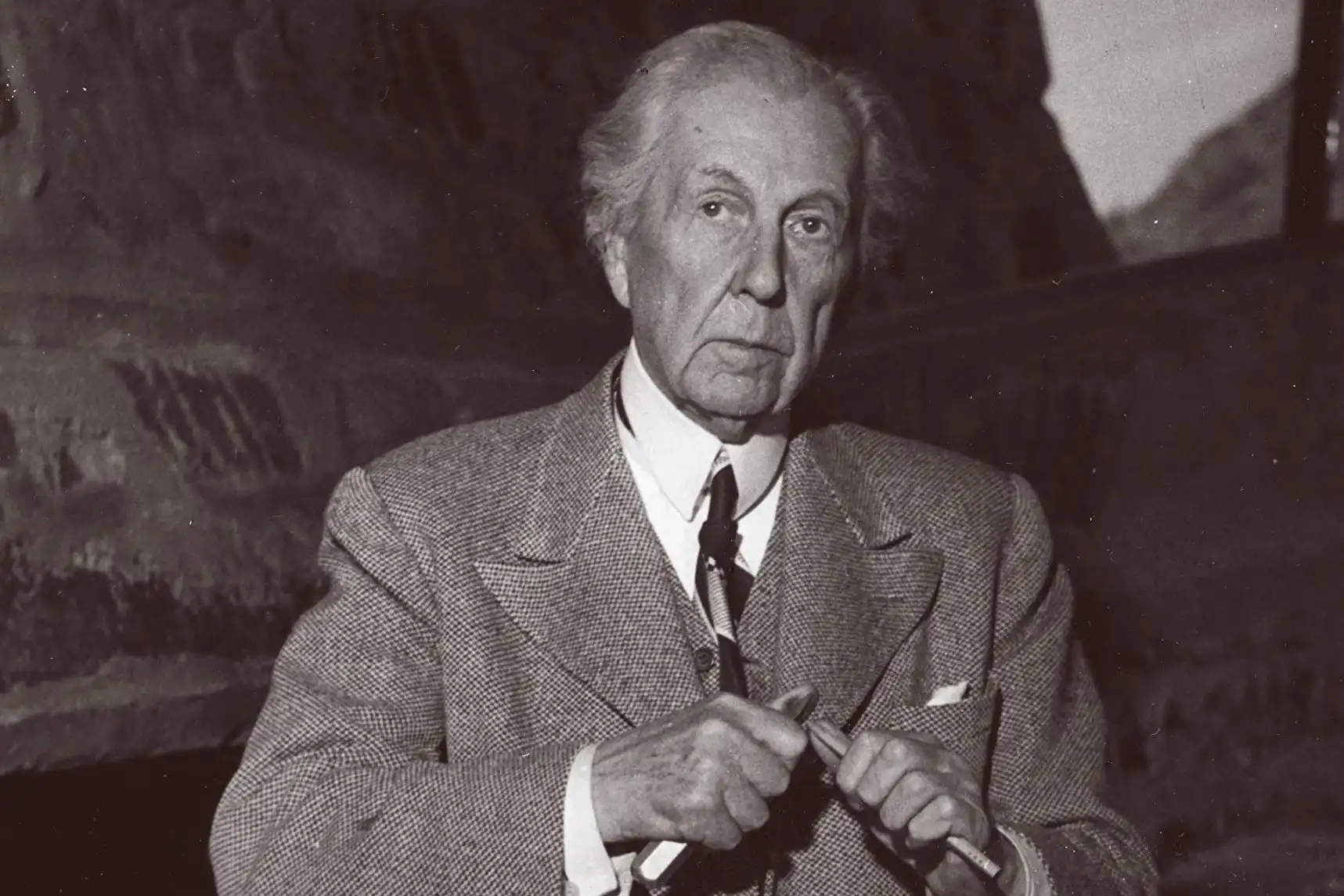
Frank Lloyd Wright, one of the most important architects of the 20th century, deeply influenced contemporary architecture and left a lasting impression worldwide. A proponent of ‘Organic Architecture,’ which emphasizes the harmonious integration of architecture with nature and urban landscapes, Wright’s works are known for their innovative forms, open floor plans, and environmentally conscious designs.
Advocating the ‘form follows function’ principle he learned from Louis Sullivan, Wright combined art and craft over time and revealed his own unique style in his designs. Frank Lloyd Wright, who aimed to improve people’s living spaces both aesthetically and functionally, designed the projects he designed comprehensively, including interiors, fixed items, and equipment.
By revitalizing the ‘Prairie Style’ homes, Wright became a pioneering figure in residential architecture in the United States, bringing a new perspective to modern architecture.
Fallingwater House

Location: Pennsylvania, USA
Year: 1937
Fallingwater is one of the world’s most famous and significant residential projects, designed by Frank Lloyd Wright. A striking example of the Organic Architecture that Wright championed, the building is positioned over a waterfall, integrating the sound and movement of the water into the interior space. Wright, who preferred horizontal architecture instead of vertical architecture, produced the volumes of the structure by expanding horizontally as needed. In this way, the terraces and floor slabs of the Fallingwater House, which gained an asymmetrical identity, are left smooth and exposed in order to emphasize the strong relationship the structure has with the horizontal axis.
Fallingwater House, a strong example of modern architecture and design in harmony with nature, is one of Wright’s most famous designs.
Ludwig Mies van der Rohe (27 March 1886 – 17 August 1969)
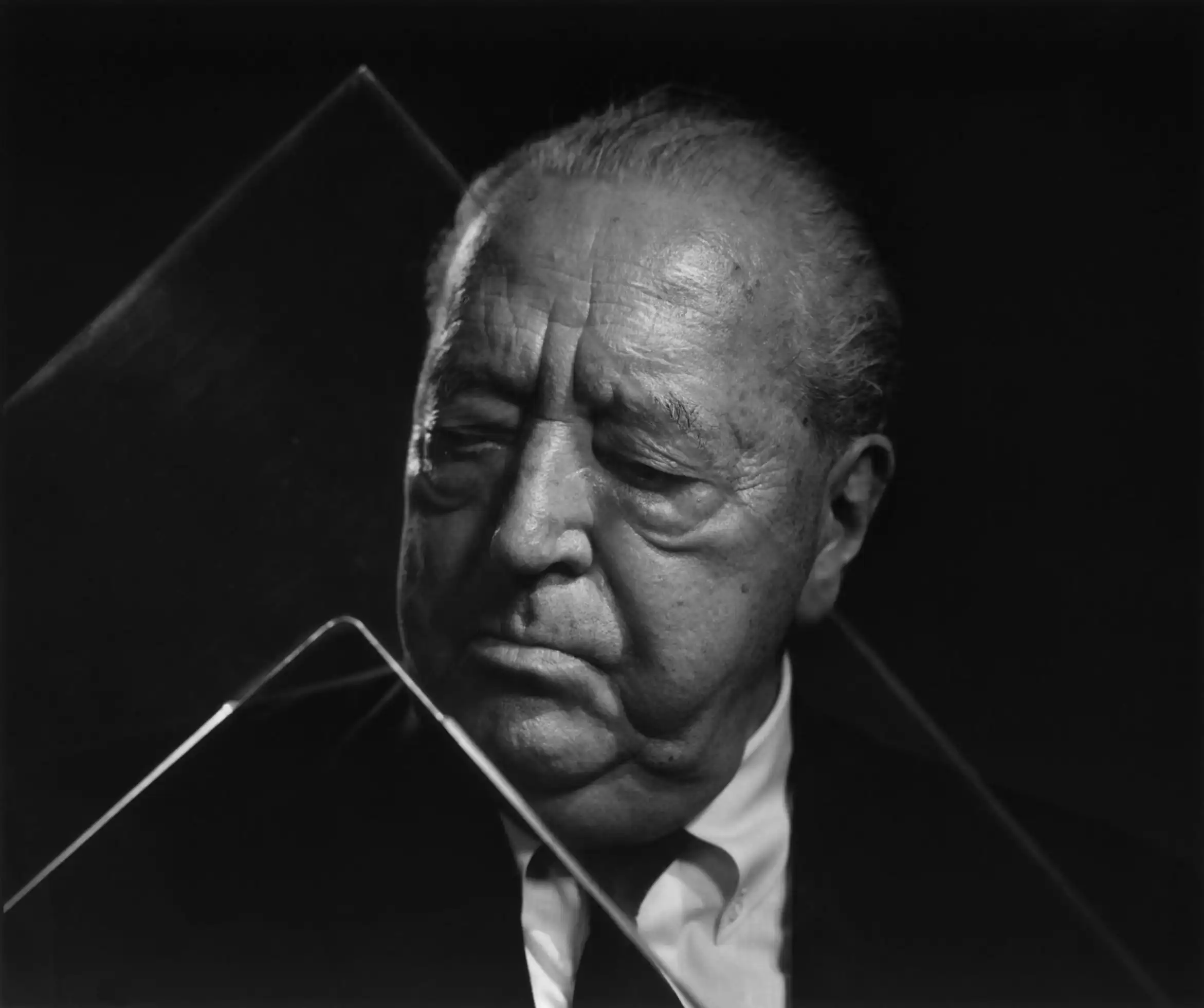
Ludwig Mies van der Rohe, one of the leading figures of modernist architecture, is one of the most famous architects of the 20th century. Known for defining a distinct modern architectural style called the International Style, Mies van der Rohe is recognized for his “less is more” philosophy. Despite not having formal architectural training, van der Rohe was preoccupied with the necessity of a new architectural vision that reflected the spirit of modern times.
Van der Rohe, who transferred the concepts of openness, transparency, and flexibility to his designs, used innovative materials such as industrial steel and glass sheet, which helped him create clean, simple designs. Combining functionality and aesthetics with his rational approach, Ludwig Mies van der Rohe focused on the essence of the structures by avoiding unnecessary details in his designs.
Serving as the third and final director of the Bauhaus until it closed in 1933, the architect made significant contributions to the development of modern architecture, leaving a lasting mark on architectural history.
Farnsworth House
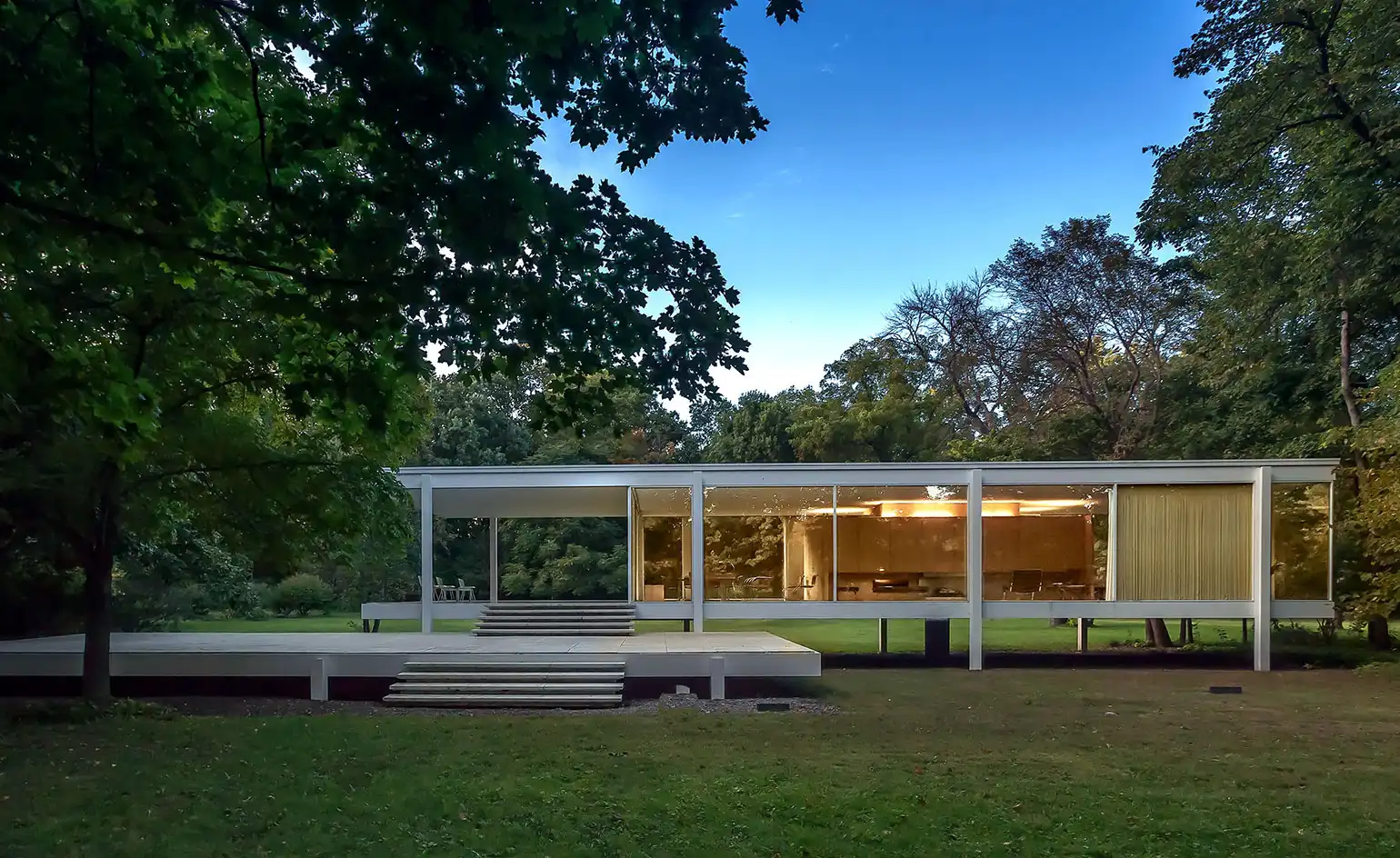
Location: Chicago, USA
Year: 1951
Designed by Ludwig Mies van der Rohe as a weekend home for Dr. Edith Farnsworth, this structure is an iconic masterpiece of the International Style. Reflecting the minimalist approach to architecture and the aesthetic values of modernism, the Farnsworth House embraces a commitment to harmony between the man-made structure and nature. With its glass surfaces, the building almost eliminates the boundary between interior and exterior, and it is constructed on an elevated platform to separate it from the surrounding nature. Inside, there are typically no walls, allowing the spaces to flow fluidly into one another.
One of Ludwig Mies van der Rohe’s most famous structures, the Farnsworth House is an architectural manifesto with its modernist design that emphasizes functionality and simplicity.
Le Corbusier (27 October 1887 – 27 August 1965)
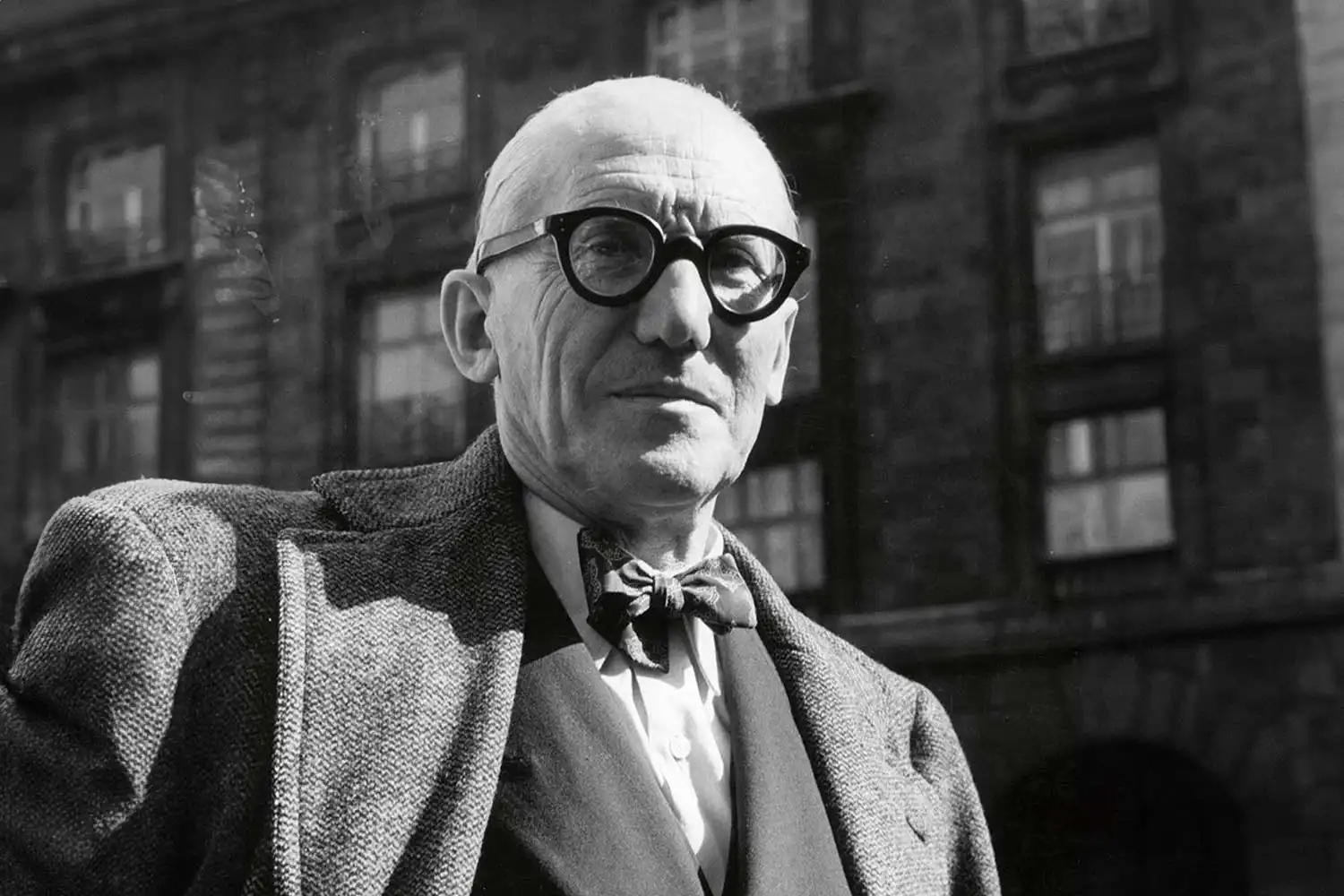
The Swiss-French architect, whose real name is Charles-Edouard Jeanneret, also known as Le Corbusier, revolutionized the world of design and paved the way for modern architecture. One of the most famous architects of the 20th century, Le Corbusier created some of the most iconic structures of modernism, as well as creating impressive works of art and developing timeless furniture.
Le Corbusier’s architectural works, which are directly related to the ideas of modernity, represent a new spirit, ‘Esprit Nouveau’. Some of his unique buildings aimed to standardize architecture, while others were prototypes or a fusion of many different concepts of their time.
Known for his use of concrete, glass and steel in his designs, Le Corbusier combined functionality, aesthetics and industrial production in his architecture. Rejecting ornamentation and historicism and prioritizing mass-production techniques, the architect outlined the general outlines of modern architecture with his manifesto Towards a New Architecture: The Five Points of Architecture. These five points include pilotis, horizontal windows, free facades, open floor plans, and roof gardens.
Villa Savoye
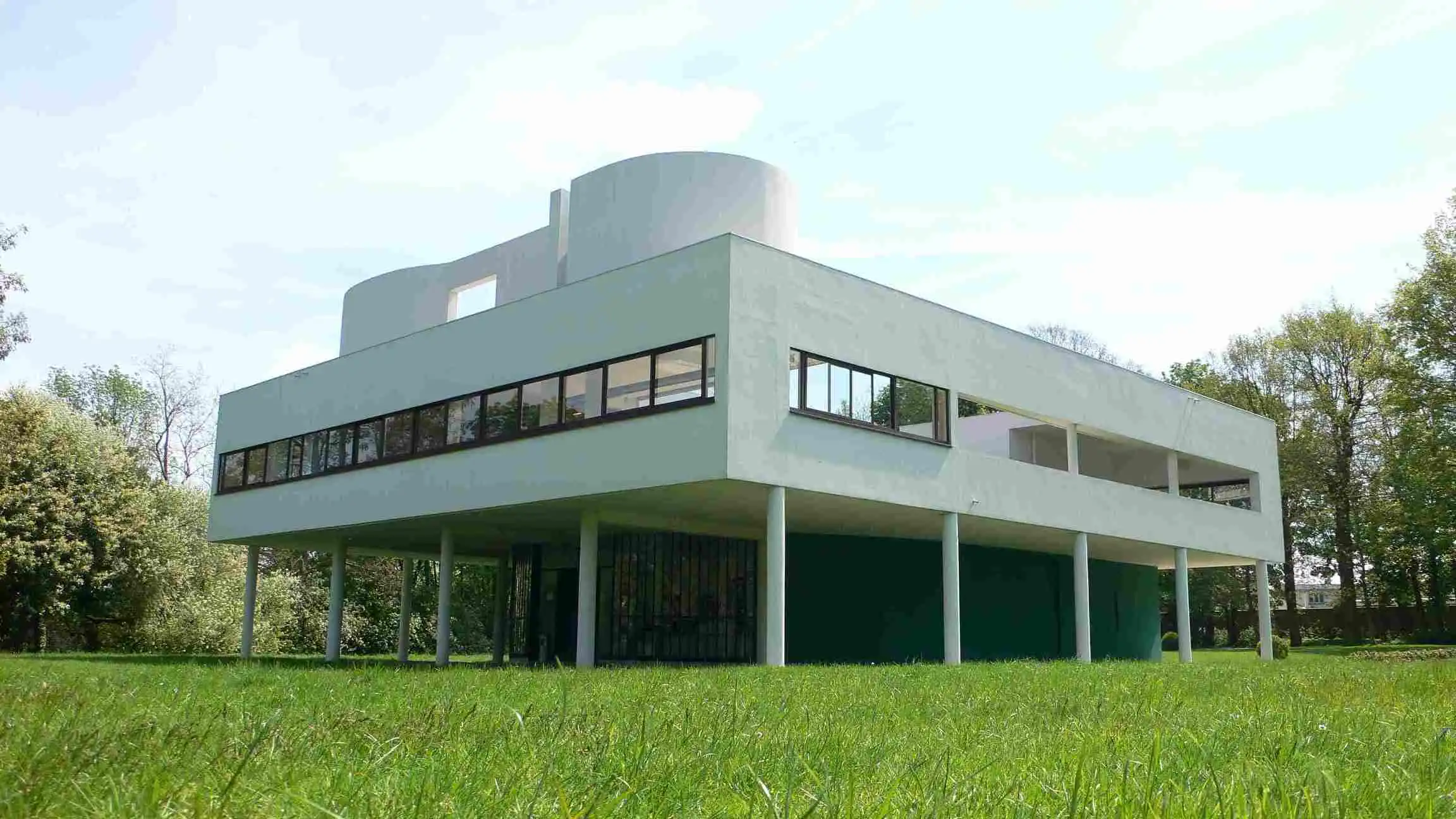
Location: Poissy, France
Year: 1931
One of Le Corbusier’s most famous buildings, Villa Savoye is one of the first works of modern architecture. It is the first building where Le Corbusier fully applied his five architectural principles. The design of Villa Savoye features a simple massing with a square volume lifted off the ground and resting on pilotis. The vertical circulation of this villa with a free plan layout is provided by a low-sloping ramp and a spiral staircase located in the center of the plan. With its flat roof, ribbon windows, and a free facade design independent of the building’s internal functions, Villa Savoye stands as a manifesto of modern design and remains one of Le Corbusier’s most famous works.
Walter Gropius (18 May 1883 – 5 July 1969)
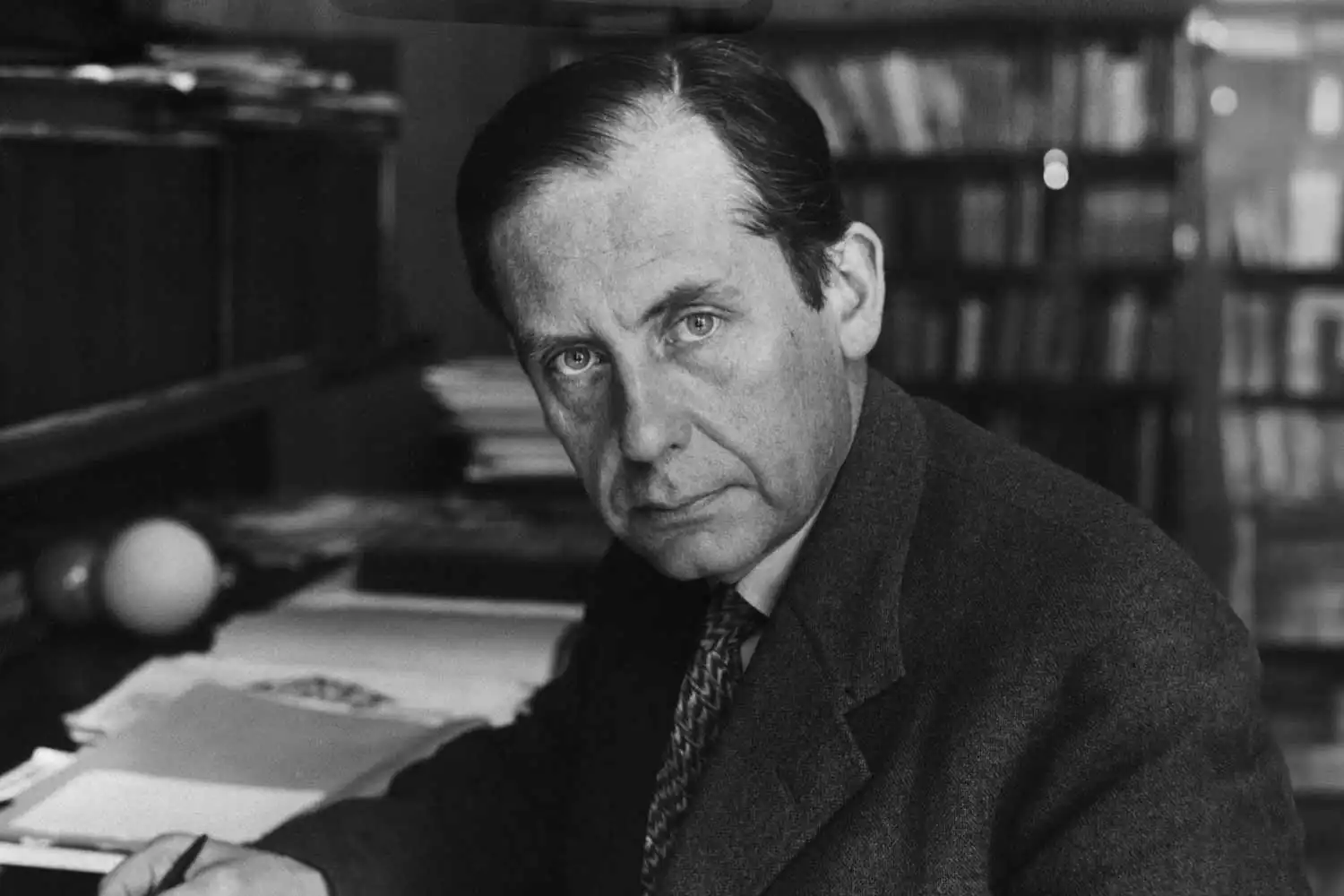
One of the most respected architects of the 20th century, Walter Adolph Georg Gropius, was a German-American architect who founded the Bauhaus school. The name “Bauhaus” is derived from the words “bauen” (to build) and “haus” (house), and it was an institution that brought together various design fields such as art, architecture, graphic design, interior design, industrial design, and typography, supporting their evolution and development. With the education program he developed at the Bauhaus School, Walter Groupis pioneered the emergence of a new approach in the field of architecture and design and aimed to combine crafts and engineering.
Gropius, one of the important architects of the modernist movement, took advantage of the developing technological opportunities of his time in his designs that emphasized functionality and simplicity.
Dessau Bauhaus

Location: Dessau, Germany
Year: 1926
Designed by Walter Gropius for the Bauhaus school, the Dessau Bauhaus building is one of the symbols of modernism. The structure, consisting of 3 wings, is connected to each other by bridges. Gropius, who valued technological innovations in his design, made innovations in the use of glass, reinforced concrete and brick in Dessau Bauhaus, and used a mushroom roof and a walkable asphalt tile roof.
Dessau Bauhaus, which emphasizes transparency by being largely covered with glass, is one of the most famous works of Walter Gropius, who perfectly establishes the balance between functionality, modernism and aesthetics.
Alvar Aalto (3 February 1898 – 11 May 1976)
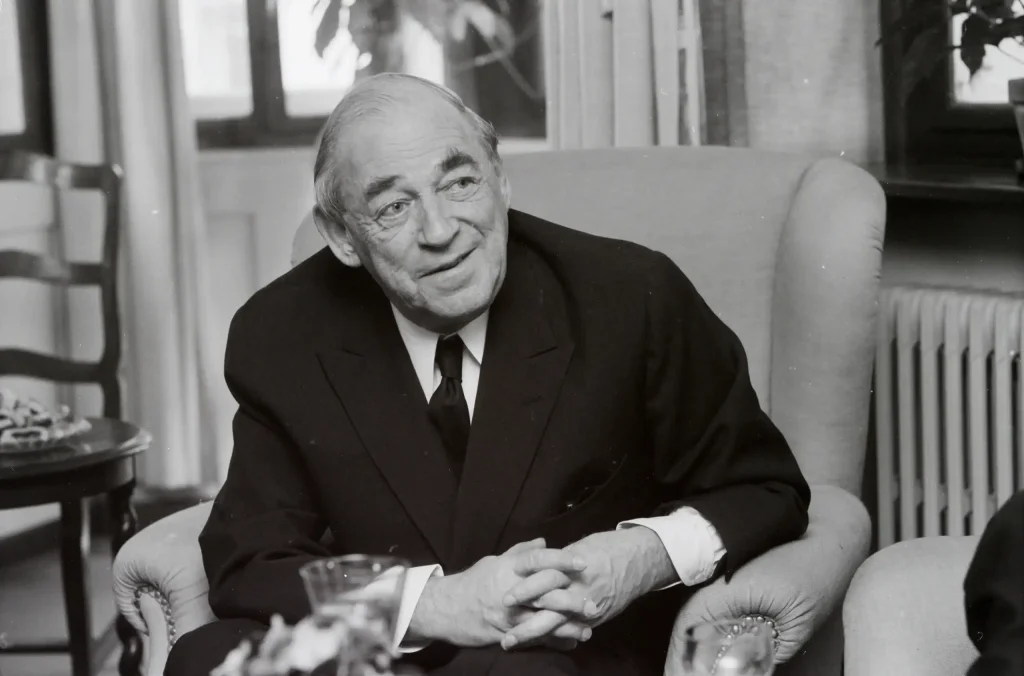
A pioneer of 20th-century modern architecture and design, Finnish architect Hugo Alvar Henrik Aalto created notable works in architecture, furniture, and glassware that gained international recognition. In his early works, Aalto followed the principles of Scandinavian Classicism, but during the 1930s, his travels to Europe introduced him to the International Style.
A remarkable synthesis of romantic and pragmatic ideas, Alvar Aalto’s works reflect a deep desire to humanize architecture with an unconventional handling of forms and materials that are both rational and intuitive. Inspired by Finland’s rich nature, his designs blend functionalism with organic design.
Paimio Sanatorium
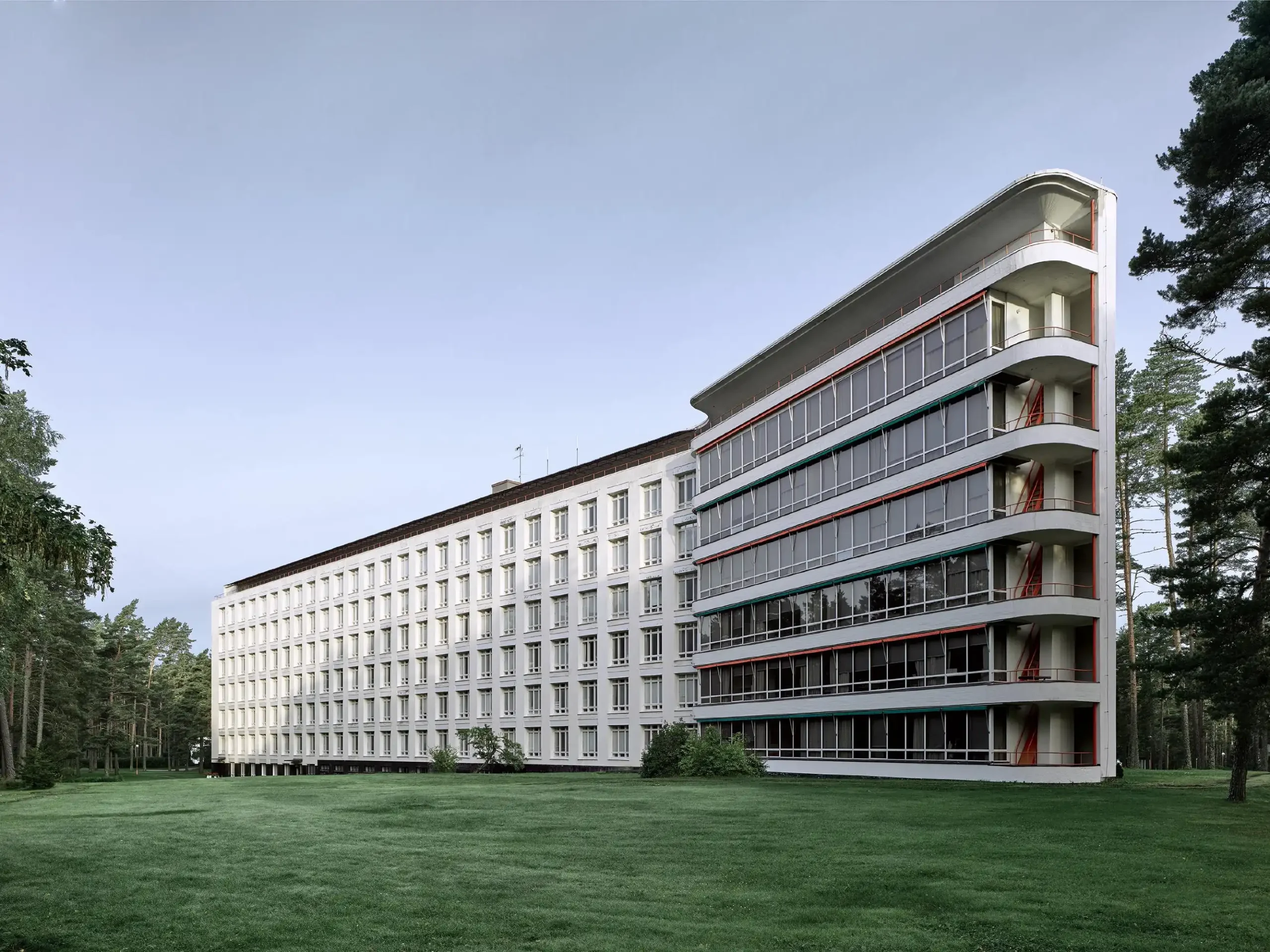
Location: Paimio, Finland
Year: 1933
One of Alvar Aalto’s most famous buildings, Paimio Sanatorium was built for tuberculosis patients. The design, which follows the principles of functionalism, is enriched with a series of details that are not only functional but also consider patient health and aim to support patients’ psychological and physical recovery.
The entire building complex, divided into several parts according to use, was designed by Aalto himself, down to the smallest details of the furniture, in accordance with his philosophy.
Hassan Fathy (23 March 1900 – 30 November 1989)
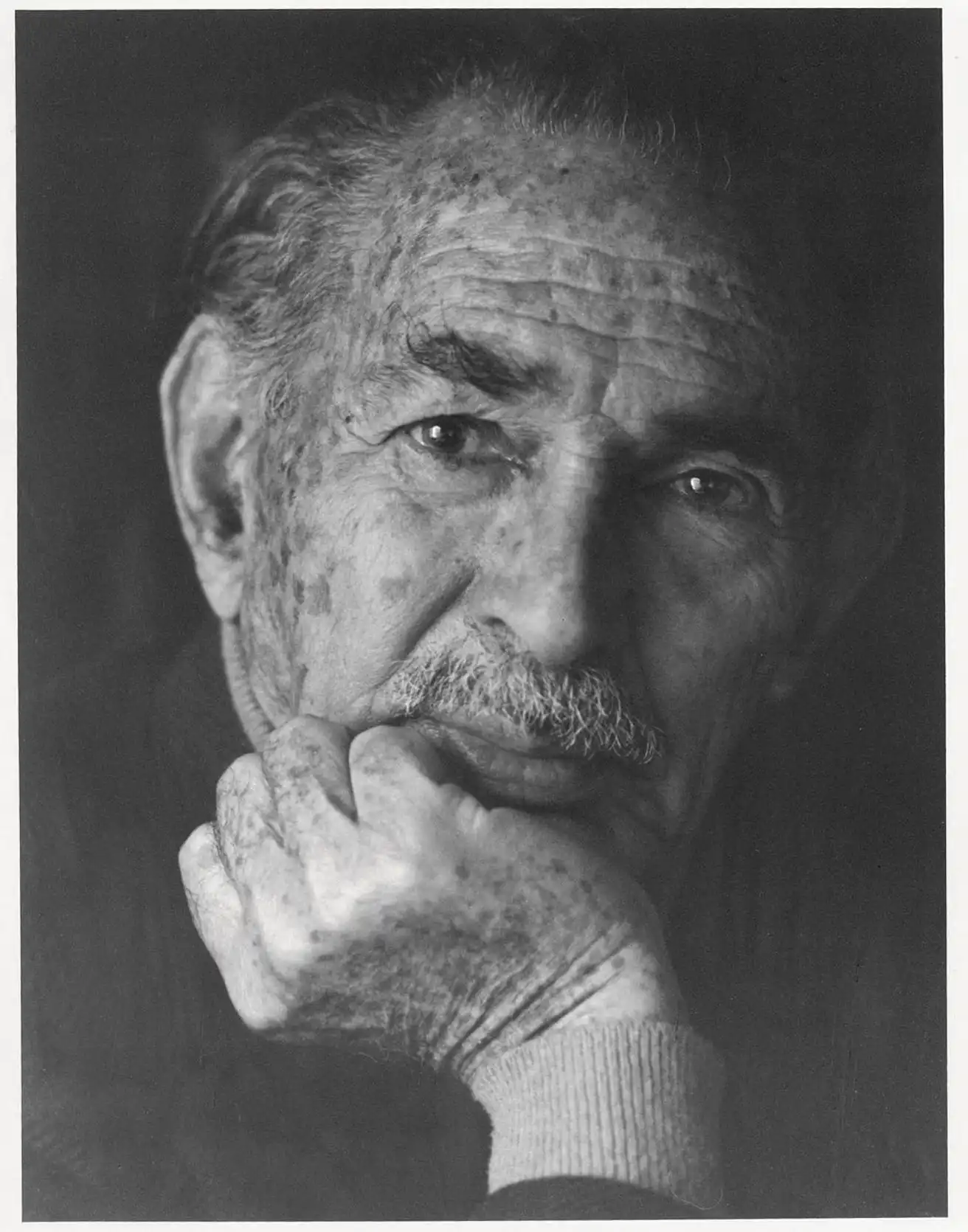
One of the most famous architects of the 20th century, Hassan Fathy was an Egyptian architect who blended traditional Egyptian architecture with modern design principles. Known for his nature-friendly, sustainable, and human-centered designs, Fathy advocated for the use of local materials.
Embracing the idea that buildings should be in harmony with the local climate, Fathy designed structures that were well-suited to the environmental conditions and cultural context of the region. Embracing the idea that buildings should be in harmony with the local climate, Fathy designed structures that were well-suited to the environmental conditions and cultural context of the region.
New Gurna Village
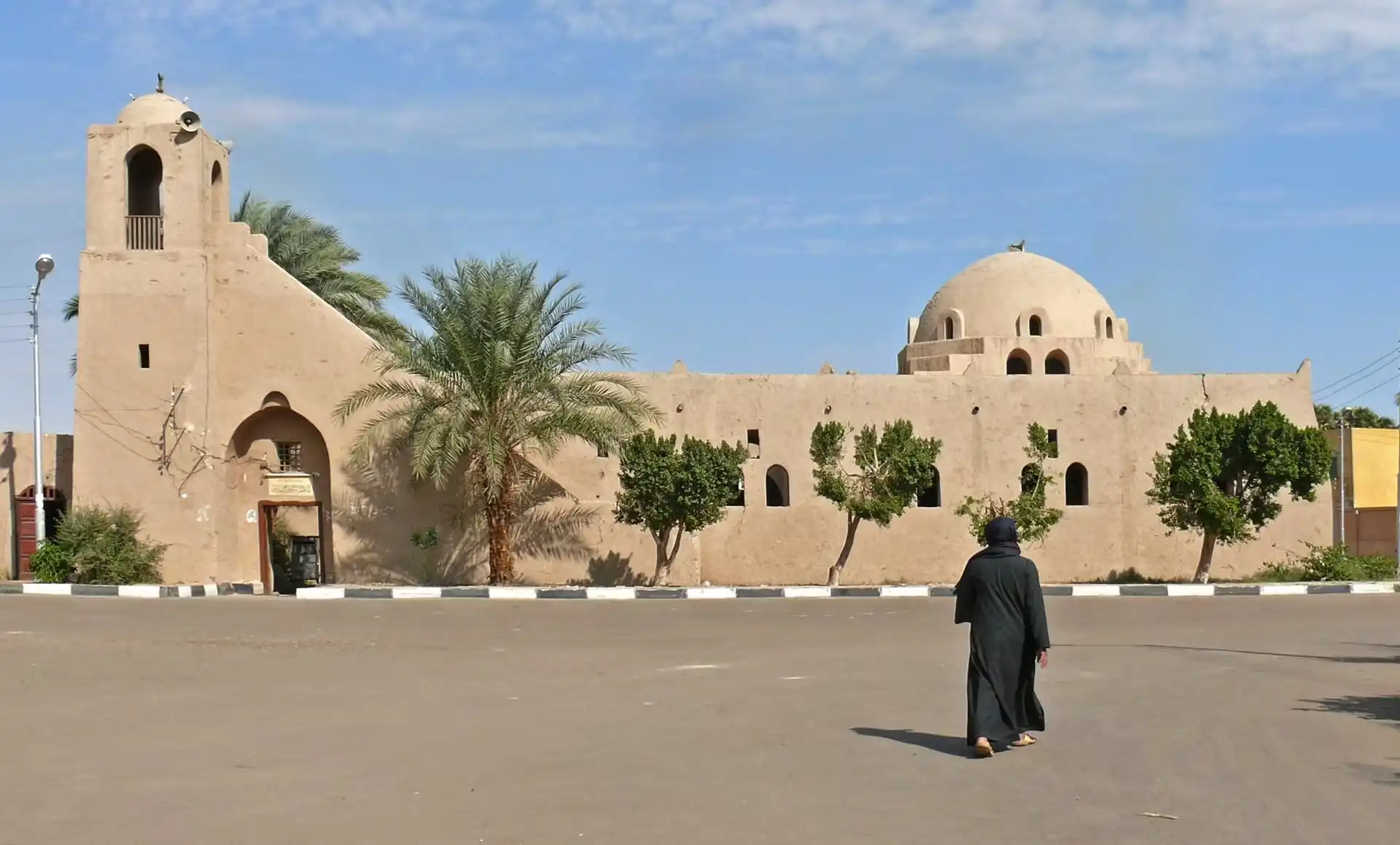
Location: Luxor, Egypt
Year: 1952
One of Hassan Fathy’s most famous projects, New Gurna Village is a residential area designed to blend traditional Egyptian architecture with modern needs, using local materials and sustainability principles. Designed with the hot desert climate of Luxor in mind, the buildings are made from natural materials such as earth and mudbrick, which provide natural cooling. Using traditional Egyptian construction techniques such as thick brick walls and high domes, Fathy has increased energy efficiency by naturally regulating the temperature inside.
Louis Kahn (20 February 1901 – 17 March 1974)
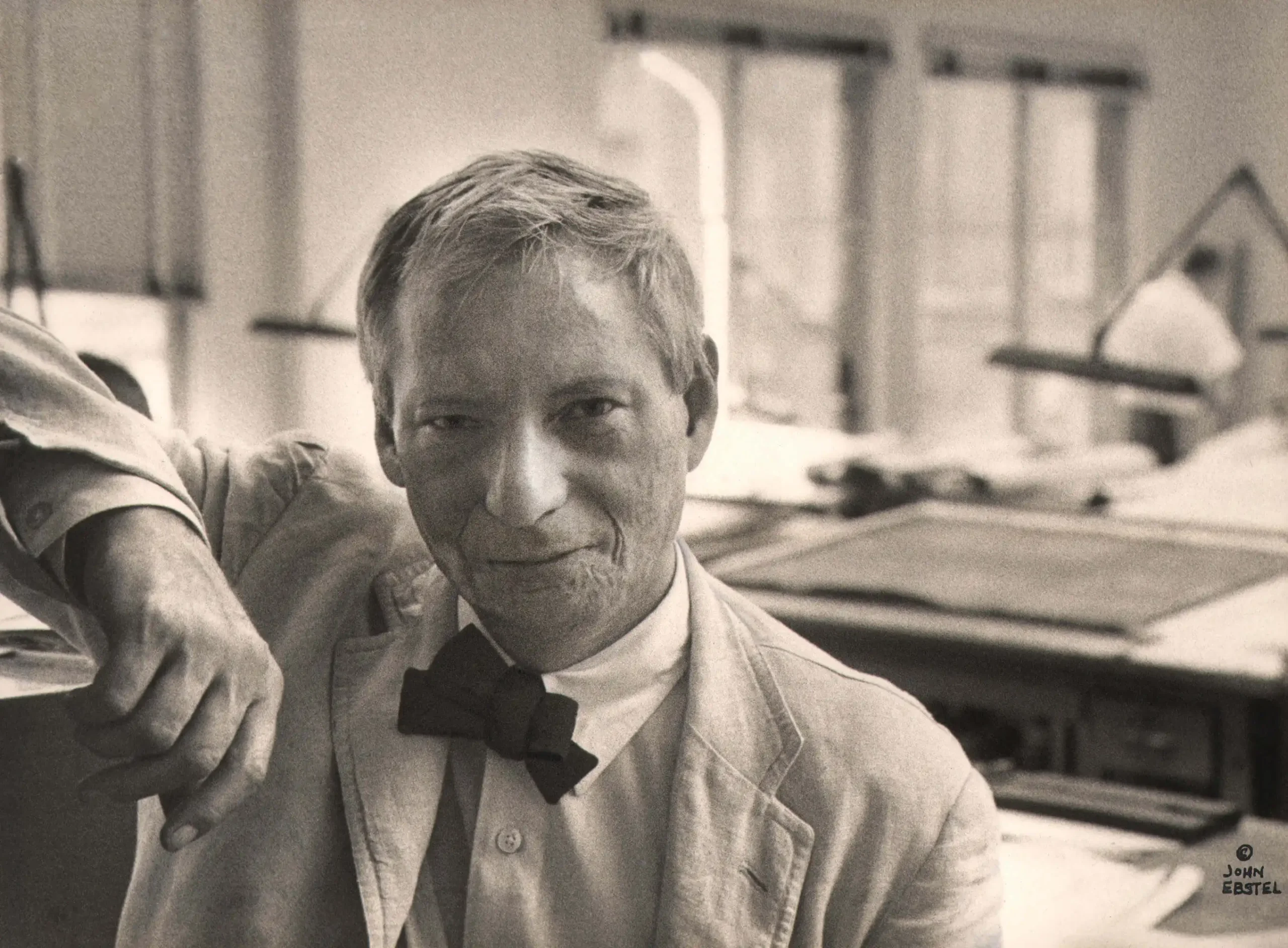
Louis Isadore Kahn is one of the most famous and respected architects of the 20th century. Kahn, who characterizes the structures he designs as strong and massive, has developed an original and emotional architectural language that combines with the modernist movement.
Kahn, who received training in the Beaux Arts school, whose basic principles are order, symmetry, cross-axis balance, and geometric mass, has an emotional and intuitive approach to architecture. Prioritizing the use of light, materials, and the effects of space on people in his designs, Louis Kahn’s works carry a spiritual and philosophical meaning.
National Assembly Buildings of Bangladesh
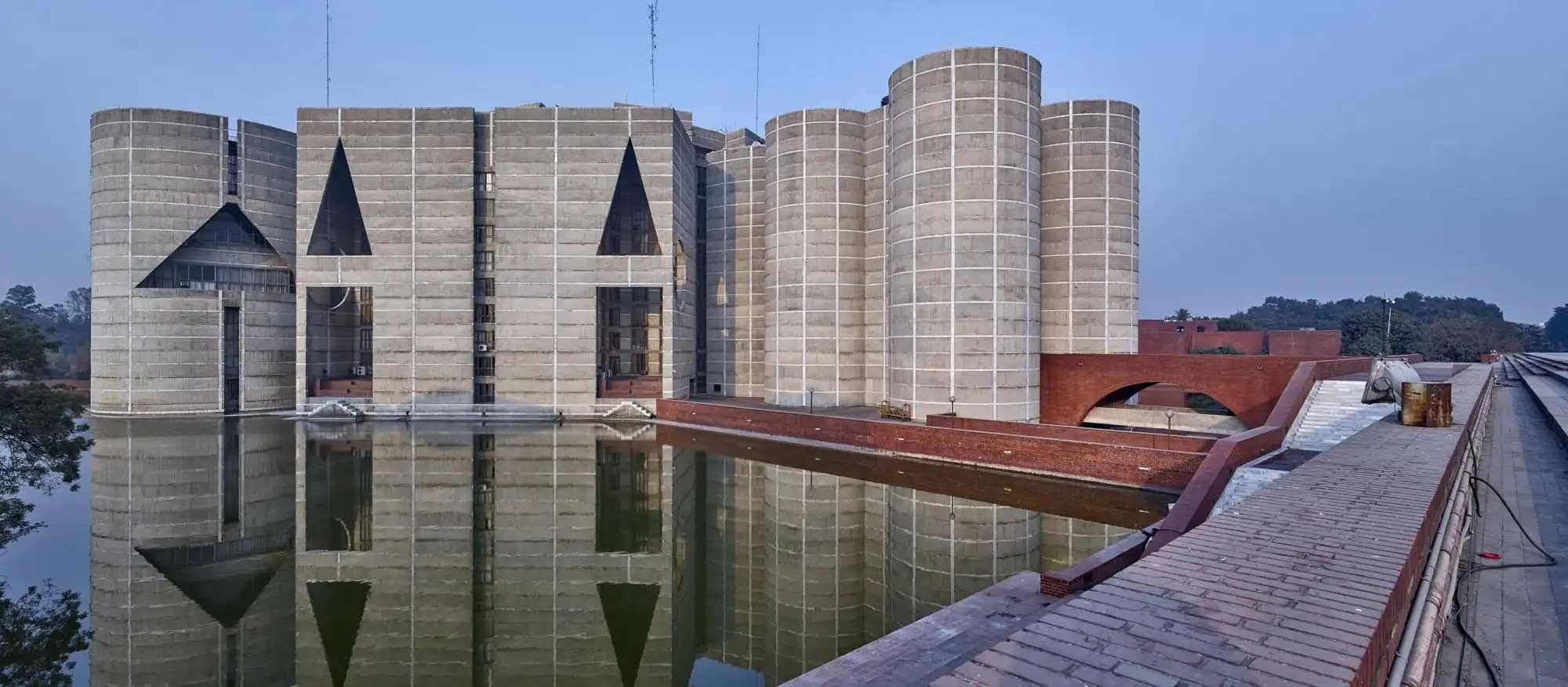
Location: Dakka, Bangladesh
Year: 1982
One of Louis Kahn’s most famous and impressive buildings, the National Assembly of Bangladesh, was designed to symbolize the rapidly growing metropolis. Designed as a harmonious blend of form and function, the building is organized around a strong central axis, with a combination of concrete and marble that contributes to its unique character. Kahn designed the building with an innovative approach to the use of natural light, creating an atmosphere that is both visually and functionally impressive, using simple yet powerful forms.
Oscar Niemeyer (20 December 1907 – 5 December 2012)
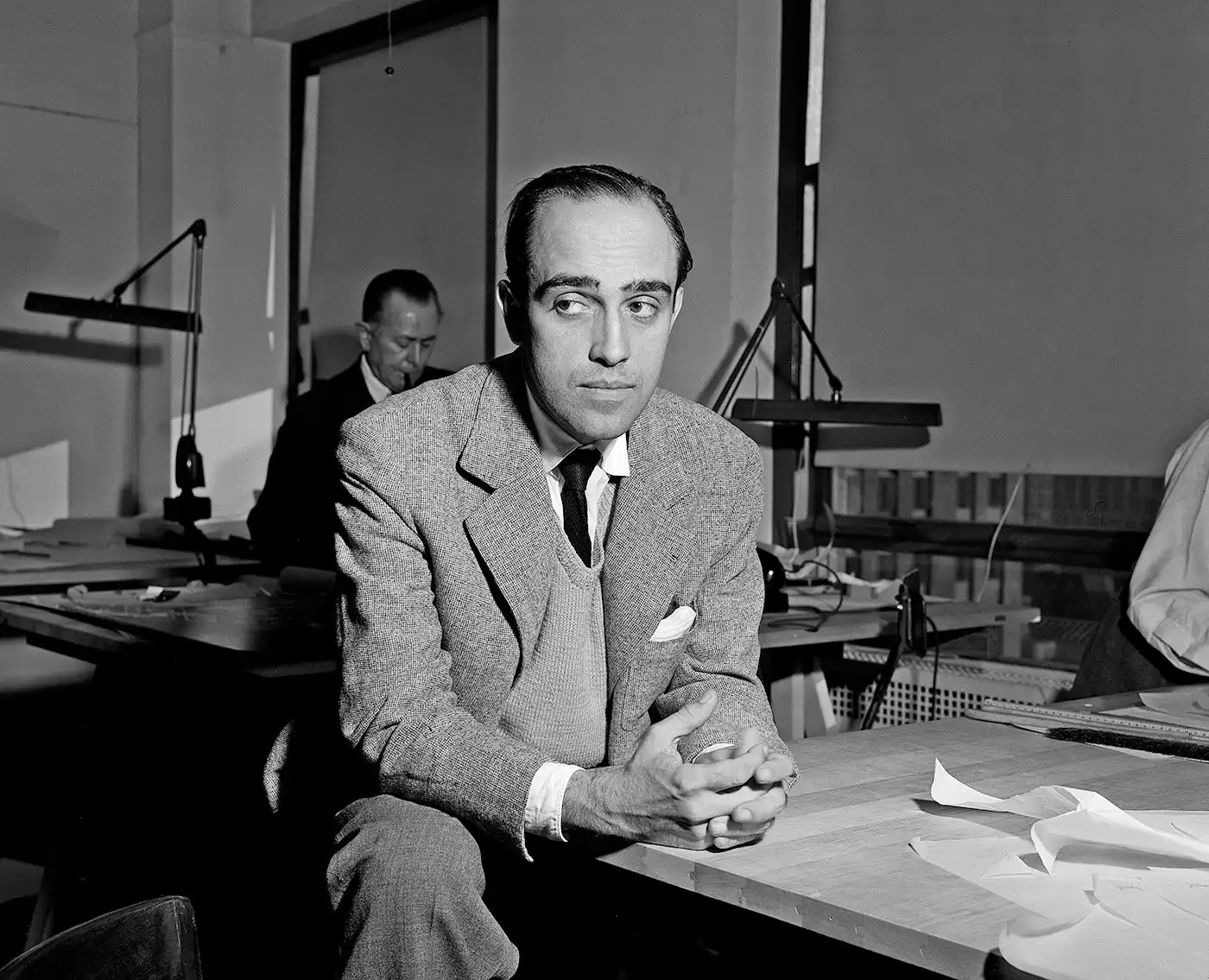
One of the most famous architects of the 20th century, Oscar Ribeiro de Almeida Niemeyer Soares Filho, known as Oscar Niemeyer, is one of the most influential figures of Brazilian modern architecture. Niemeyer played a significant role in the design of Brazil’s capital, Brasília, blending engineering skills with design to create poetic structures.
Niemeyer, who developed a unique style by adopting the modern architectural approach, frequently used curvilinear forms in his designs and created aesthetically exciting structures. Known for using cast concrete in various forms, Niemeyer argued that the curved shapes in his structures made people feel positive energy.
Niemeyer, who reflected his free and innovative spirit in his designs, interpreted modernism with a strong aesthetic language and built many works that left their mark on the 20th century.
Oscar Niemeyer Museum
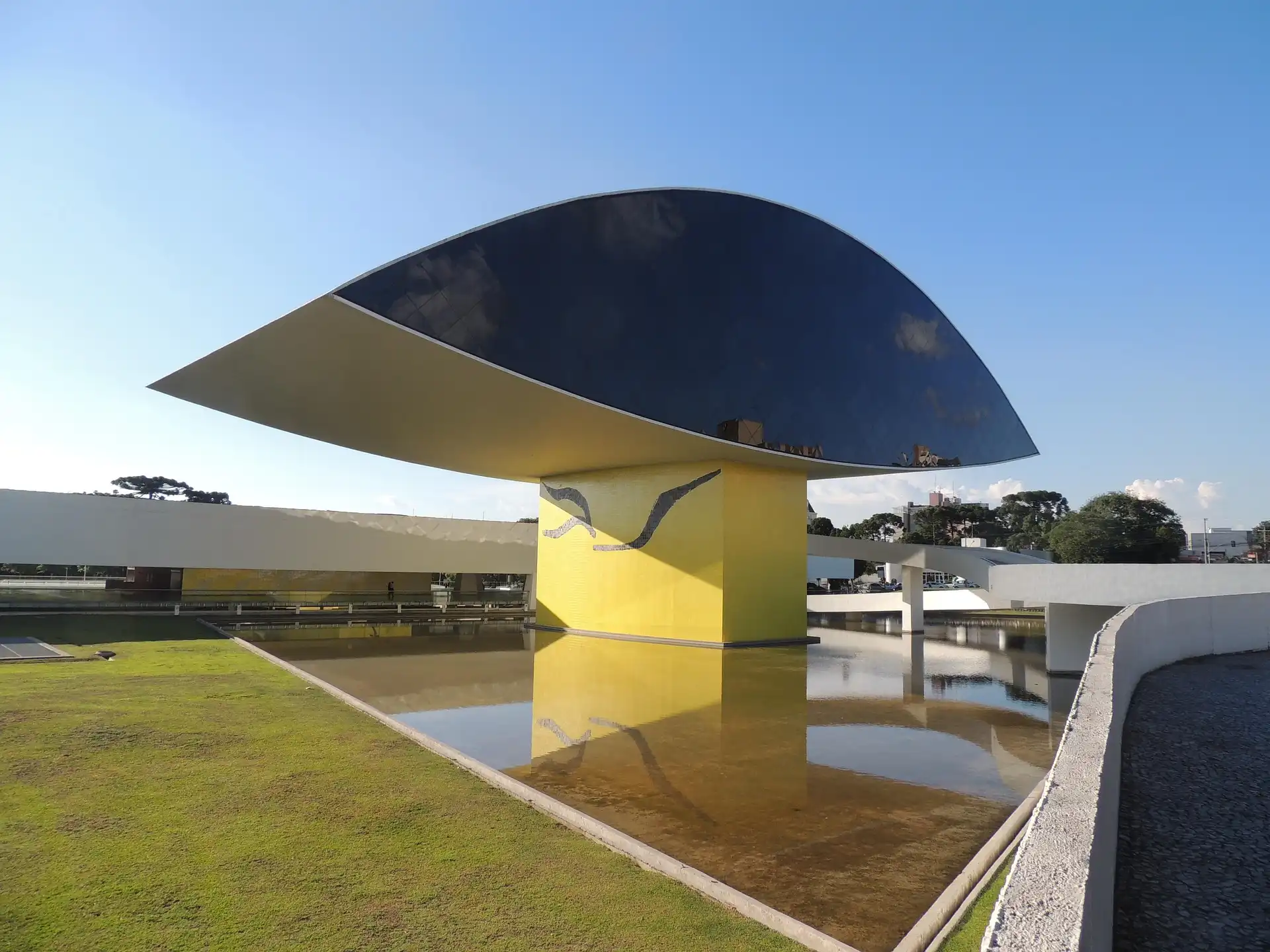
Location: Curitiba, Brazil
Year: 2002
The Oscar Niemeyer Museum, also known as the Novo Museum, depicts a brutalist modern architectural style designed by Niemeyer. One of the main sections of the museum, which is a symbol of modernist architecture, is designed in the shape of a giant eye. The museum, which rises from the ground with support and forms a 3-story structure above ground, is designed with organic and fluid forms. The building’s facade features glass panels, and the structure is constructed with pre-stressed concrete supporting elements.
Jorn Oberg Utzon (9 April 1918 – 29 November 2008)
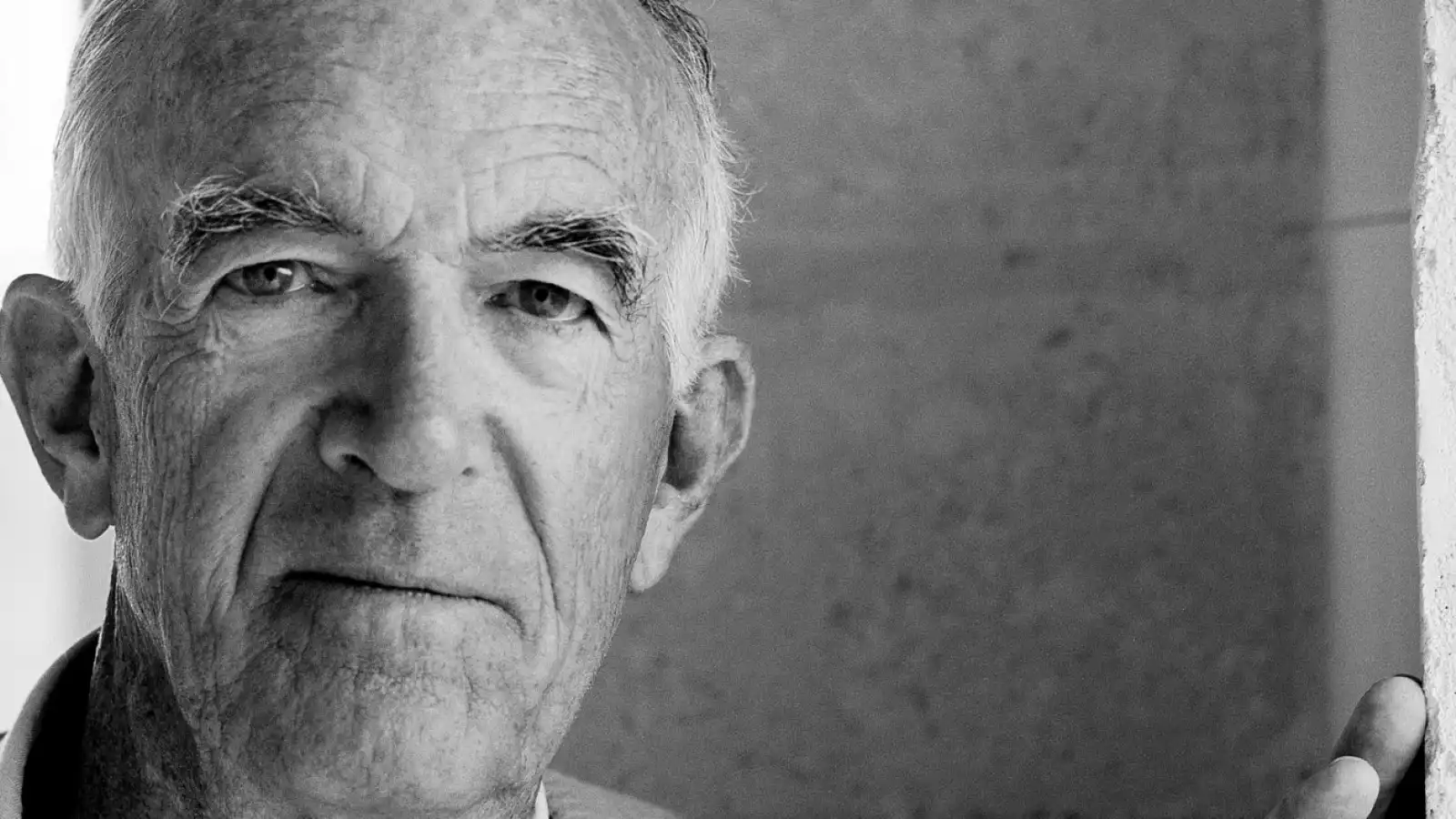
One of the most famous architects of the 20th century, Danish-born Jorn Utzon created impressive projects throughout his architectural career that combined functionality with aesthetics. Influenced by various cultures, including Mayan, Chinese, Japanese, and Islamic traditions, as well as his Scandinavian heritage, Utzon balanced architectural history, which he viewed as an art, with modern design principles.
Utzon designed structures using natural forms and simple geometric shapes, aiming to establish a connection between people and their environment. He prioritized harmony with nature and the local cultural context in his designs.
Sydney Opera House
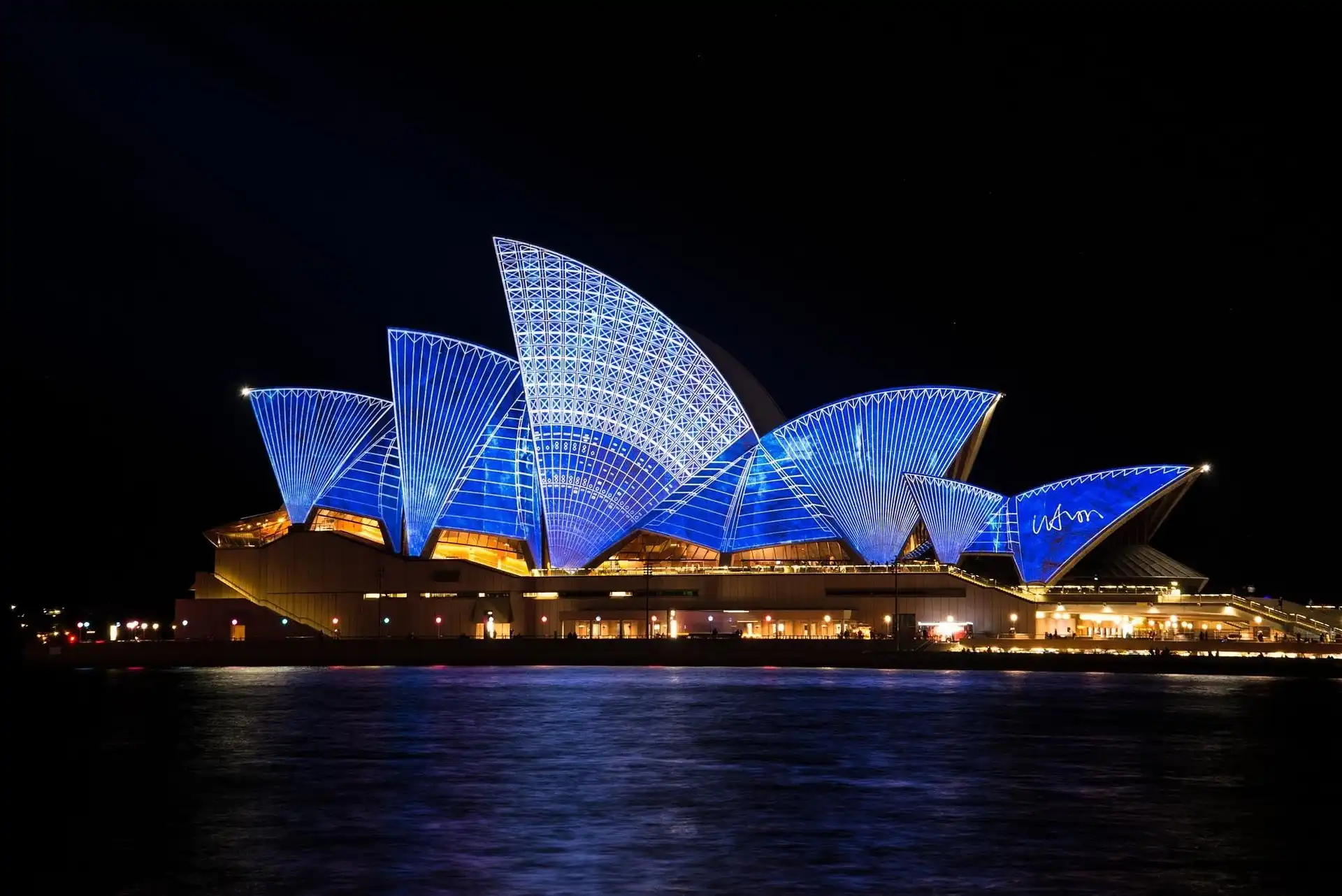
Location: Melbourne, Australia
Year: 1973
One of the most famous structures built in the 20th century, the Sydney Opera House was designed by Jorn Utzon. A modern expressionist design in which a series of large precast concrete shells, each made up of sections of a sphere, form the roof, the Opera House sits on a monumental podium. The iconic roofs, designed to resemble the sails of a ship, are covered in white ceramic tiles and gleam in the sunlight.
Frank Gehry (28 February 1929 – present)
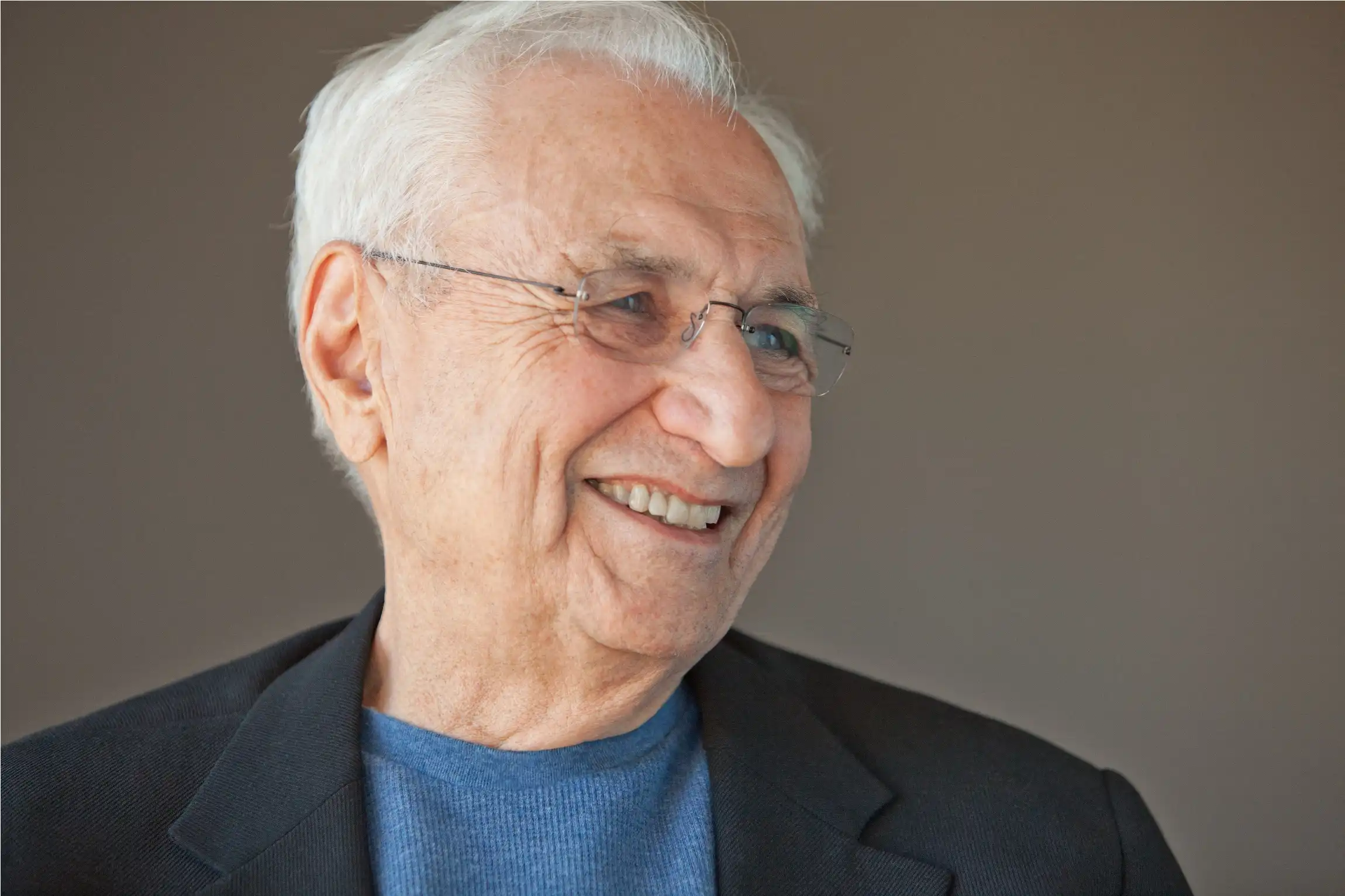
One of the most famous architects of the 20th century, Ephraim Goldberg, known as Frank Gehry, is one of the most important representatives of deconstructivism. Gehry, who questioned traditional architectural rules and forms and brought a new perspective to contemporary architecture, designed sculptural works by combining curvilinear forms with deconstructivist lines.
Using curved lines, bends, organic, and free forms, Frank Gehry designs dynamic and lively buildings that reject the fusion of form and function. By combining different materials in unexpected ways, Gehry redefines his buildings instead of blending them with their surroundings.
With complex and unique forms, Gehry has designed structures that push the boundaries of architecture, leaving his mark on many iconic buildings that became popular in the 20th century.
Guggenheim Bilbao Museum
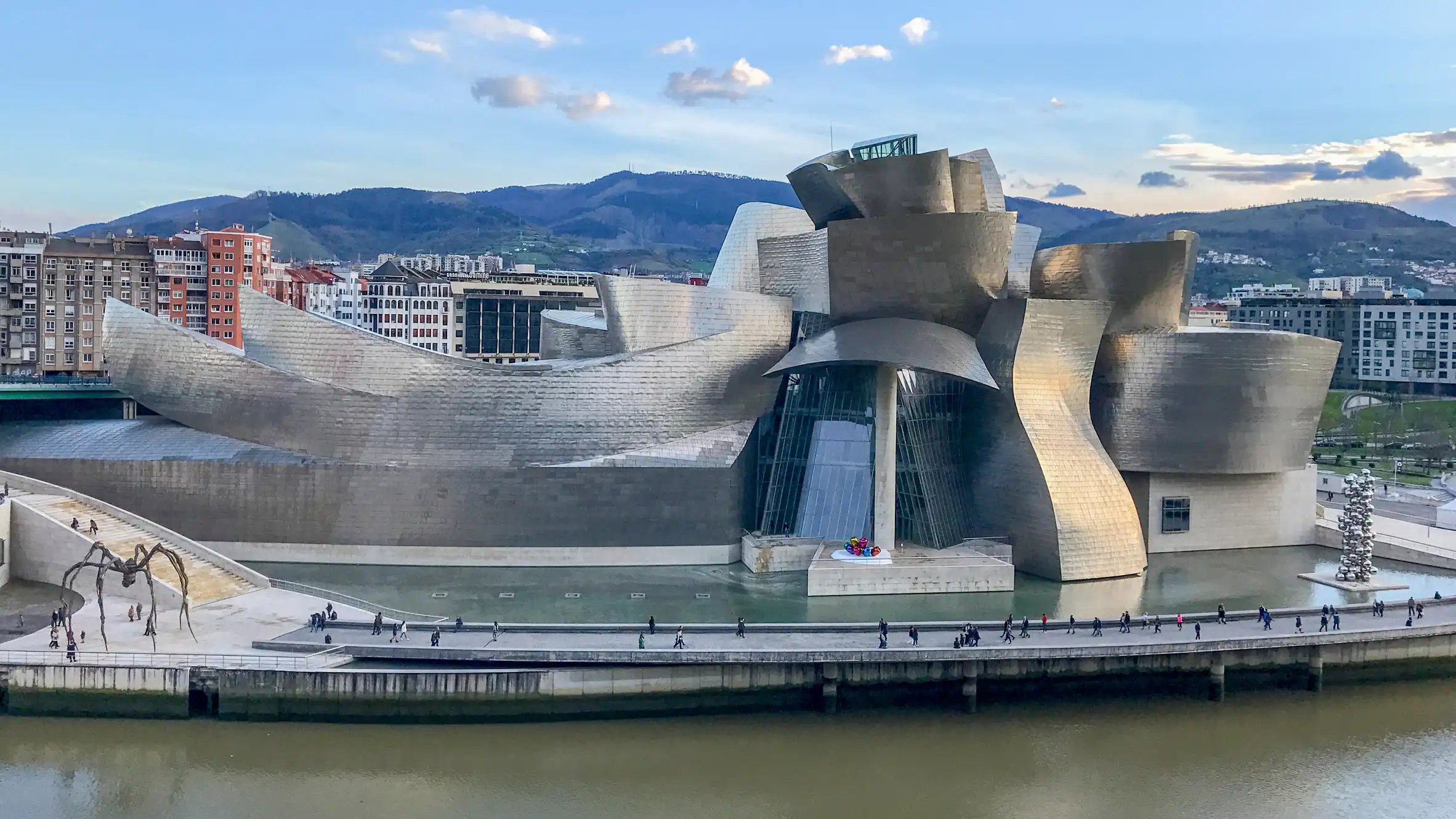
Location: Bilbao, Spain
Year: 1997
The Guggenheim Bilbao Museum, an icon of contemporary architecture, is among the most famous structures of the 20th century designed by Gehry. His deconstructivist approach, which rejects traditional symmetry and form, is evident in the museum’s design. The Guggenheim Bilbao Museum, which has become a work of art with its curved and complex geometry and curved surfaces made of titanium, glass, and limestone, is one of his most iconic designs.
Aldo Rossi (3 May 1931 – 4 September 1997)

Italian architect, urban planner and designer Aldo Rossi is one of the most important modernist architects of the 20th century. Rossi, who cared about the impact on the historical memory and collective memory of cities and buildings, considered the functional necessity as well as the cultural and historical traces of the past in his designs. Although Rossi’s architectural ideas are called Neo-Rationalism because he preferred a limited number of building types, he is also classified as postmodernist because he rejected some aspects of modernism and used aspects of historical styles.
San Cataldo Cemetery
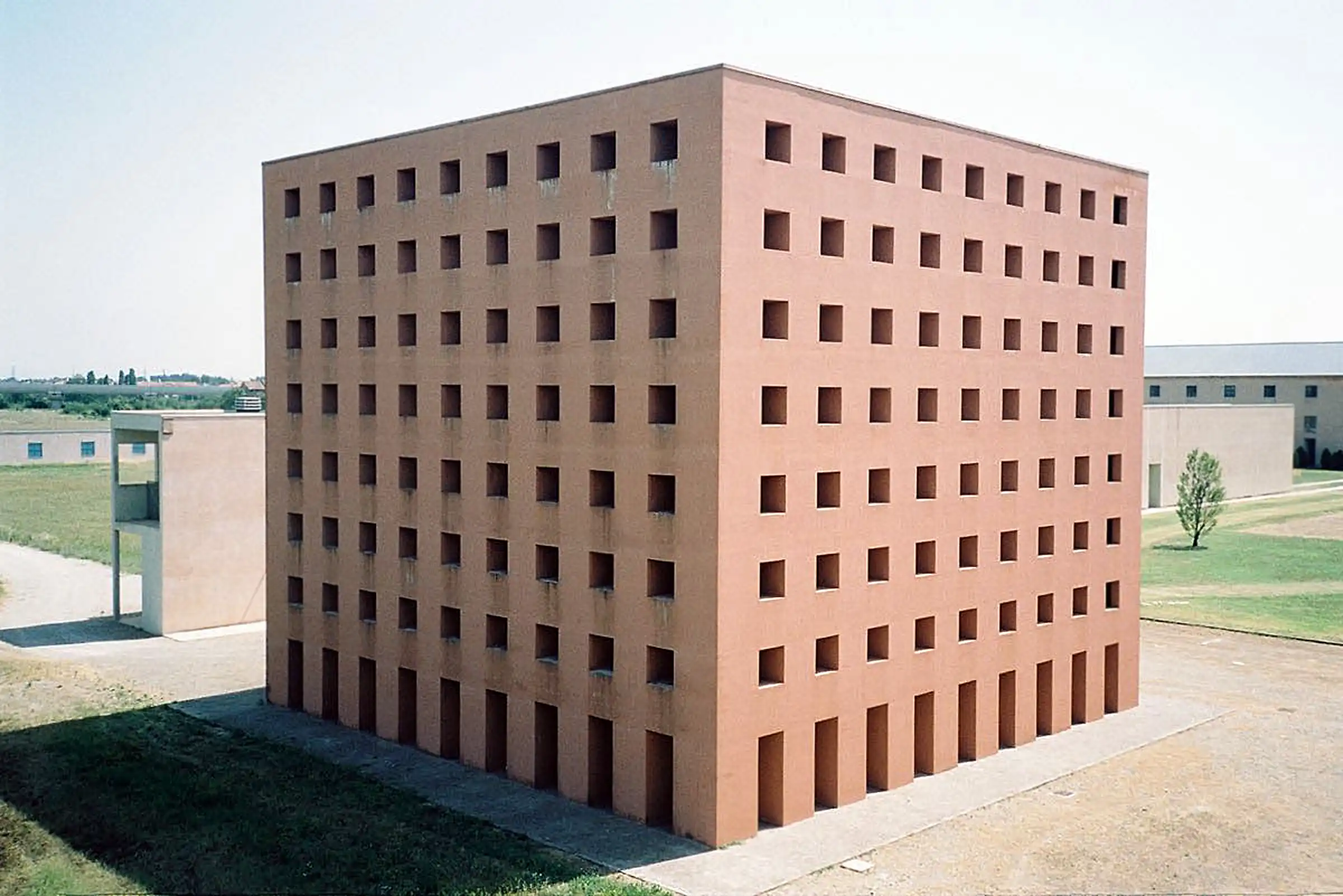
Location: Modena, Italy
Year: 1971
One of Aldo Rossi’s most famous and important projects, San Cataldo Cemetery combines the symbolism of modern architecture with historical context. Referred to by Rossi as “late youth,” the cemetery stands out with its blue roofs and the dark red color of the central building. Its rectangular layout reflects modernist design principles, and the cemetery symbolizes different time periods and stages of a person’s life.
Richard Rogers (23 July 1933 – 18 December 2021)
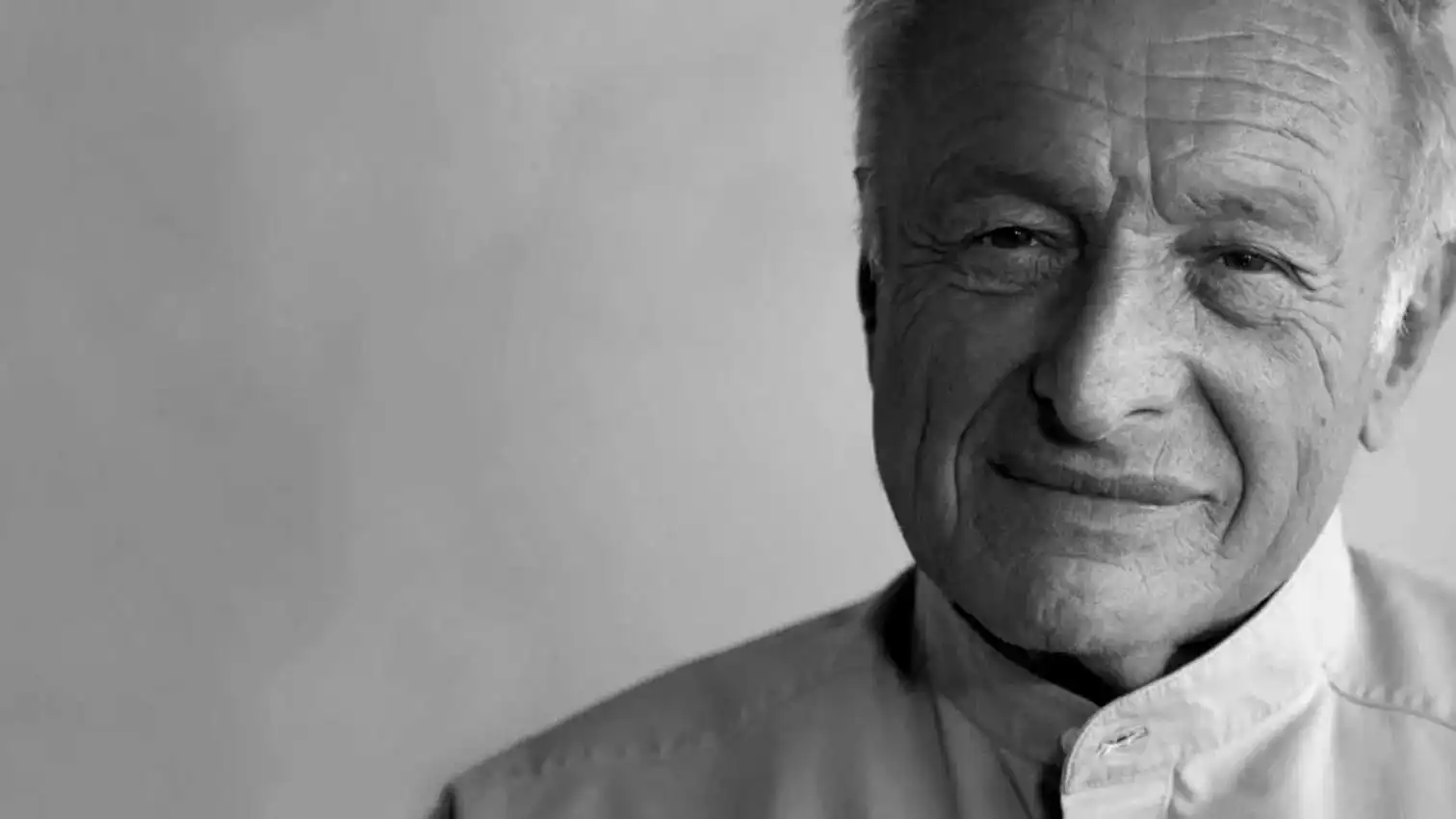
Richard Rogers, a prominent figure in contemporary architecture, is celebrated as one of the most influential architects of the 20th century. Known for his groundbreaking urban designs, Rogers’ works symbolize architectural expressionism. His structures express their functions externally, and their aesthetics are formed by the fusion of technology and design.
Rogers, who pioneered architecture into a language that carries social and environmental responsibility, cared about the harmony of the structures he designed with their surroundings.
Lloyd’s Building
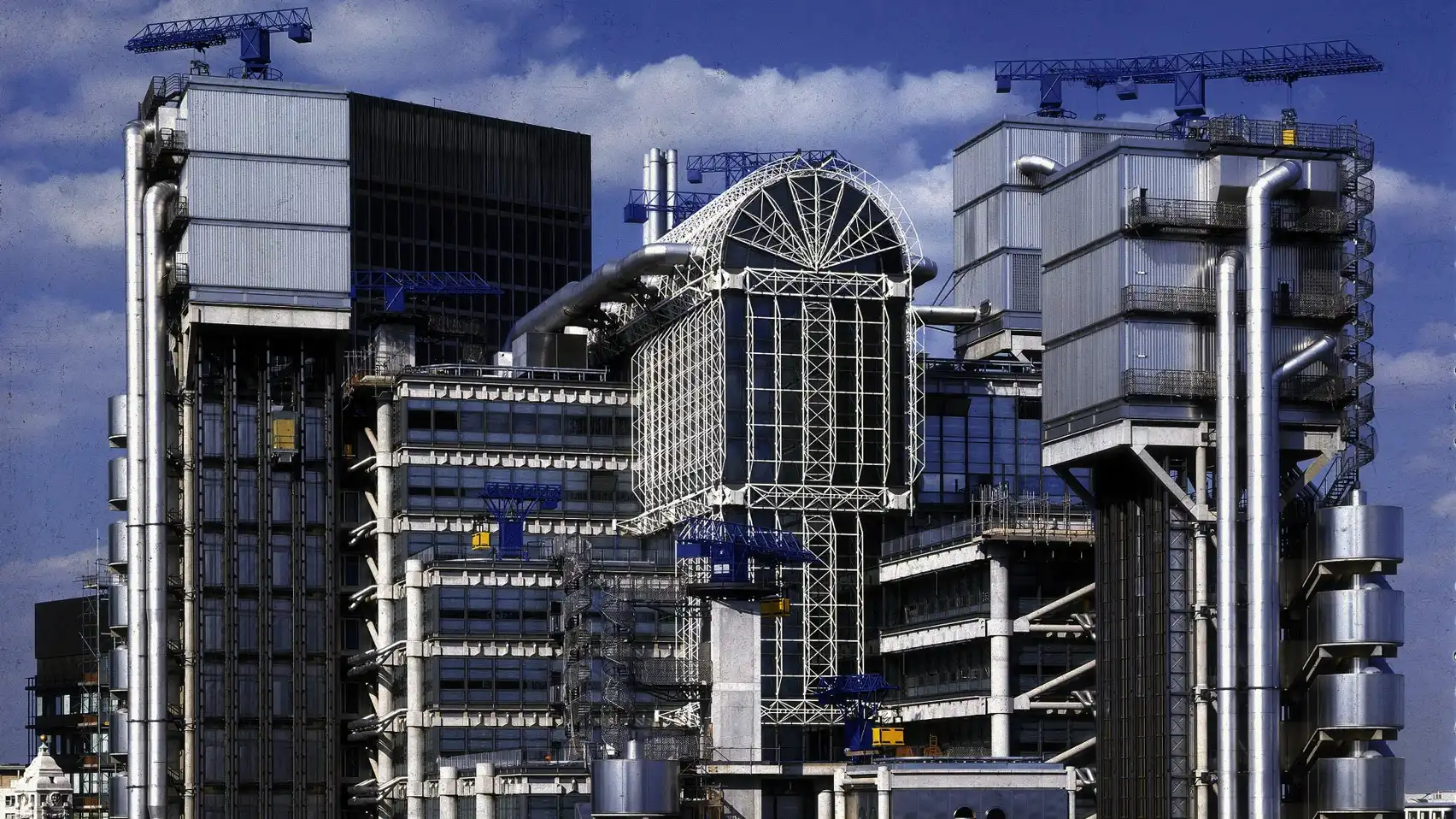
Location: London, England
Year: 1986
One of Richard Rogers’ most famous and iconic structures, Lloyd’s Building is an important example of modern architecture. The building, with its inside-out design, has its structure and services clearly visible from the outside. This 14-story building, built as the headquarters of Lloyd’s of London, one of the world’s largest insurance companies, is wrapped around a central atrium.
Renzo Piano (14 September 1937 – present)
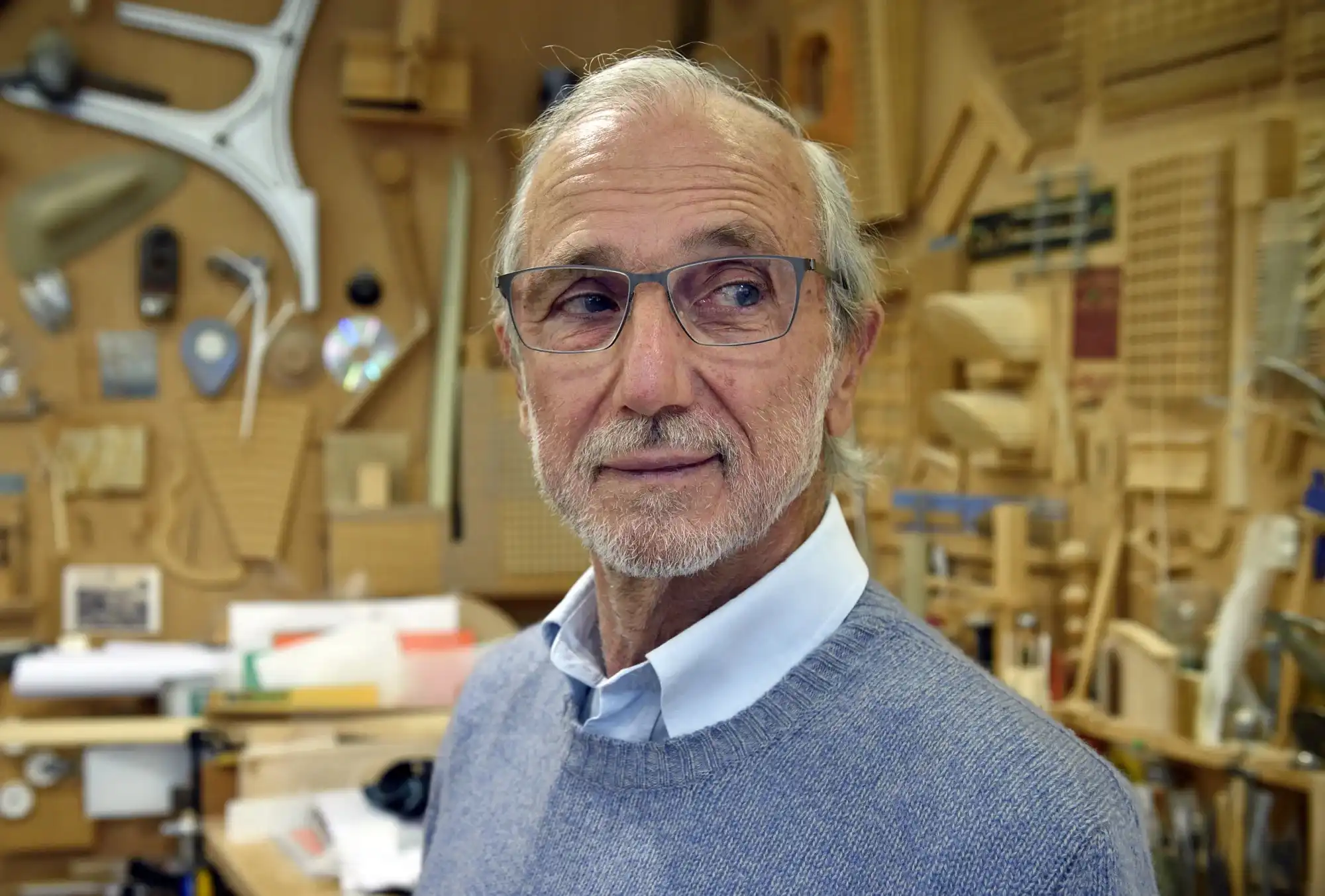
Renzo Piano, one of the most famous names in contemporary architecture, is an Italian architect who combines modern design and innovative engineering to design functional and aesthetically impressive works. Renzo Piano, an architect who cares about sustainability and using environmentally friendly technologies in his designs, has focused on reducing energy consumption and protecting the environment by including technologies such as roof gardens, solar panels, and rainwater collection systems in his designs. Piano is committed to creating designs that are environmentally harmonious and sustainable, while also emphasizing human-centered design in his work.
Centre Pompidou
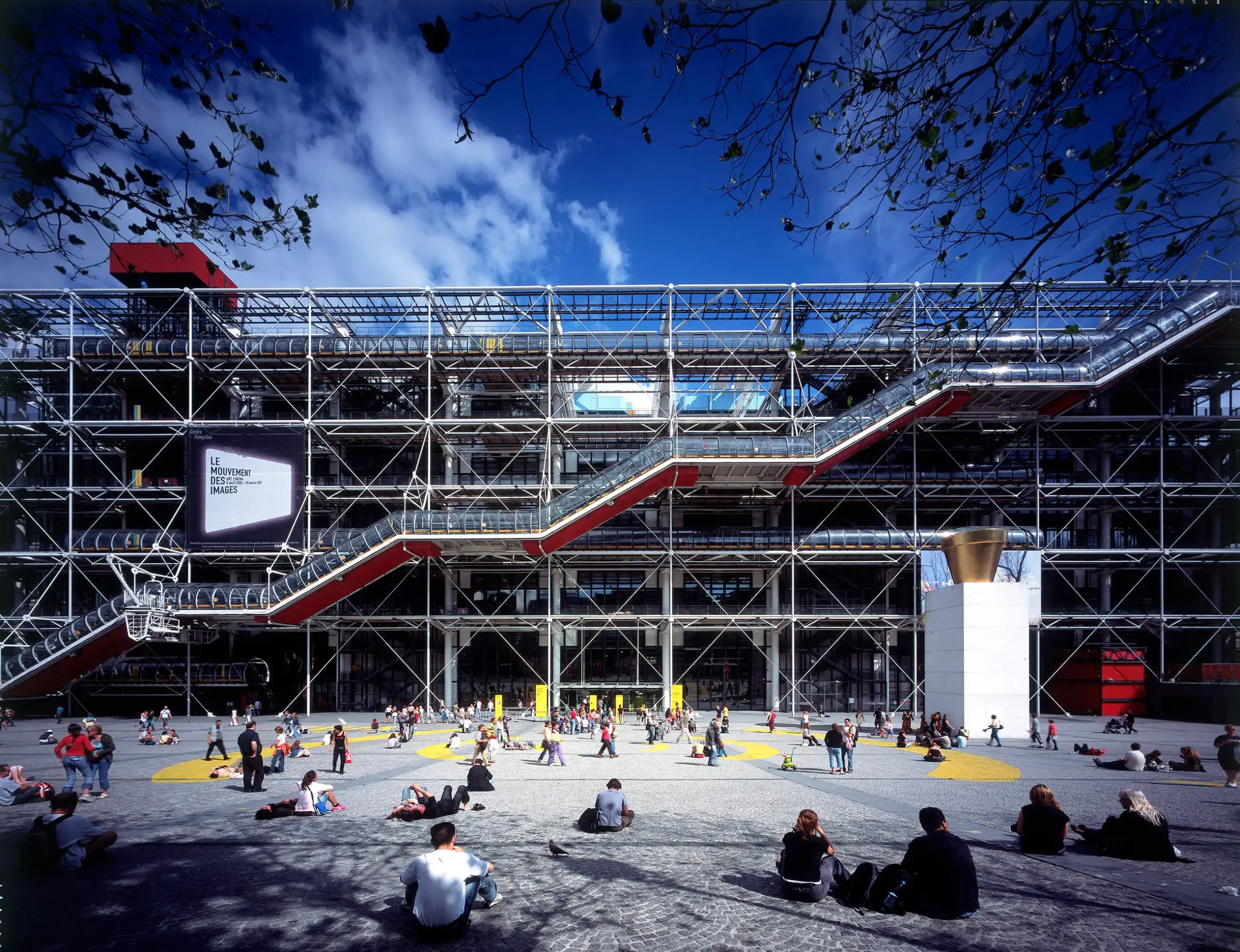
Location: Paris, France
Year: 1974
Designed by Renzo Piano in collaboration with Richard Rogers, the Centre Pompidou is one of the most famous architectural icons of Paris. A cultural center that houses contemporary art from around the world, the building features a bold design both architecturally and functionally.
With a design that adheres to the principle of industrial aesthetics, the Centre Pompidou pushes the boundaries of modernism. Its design completely reverses traditional architectural approaches by exposing internal functions to the exterior.
Tadao Ando (13 September 1941 – present)
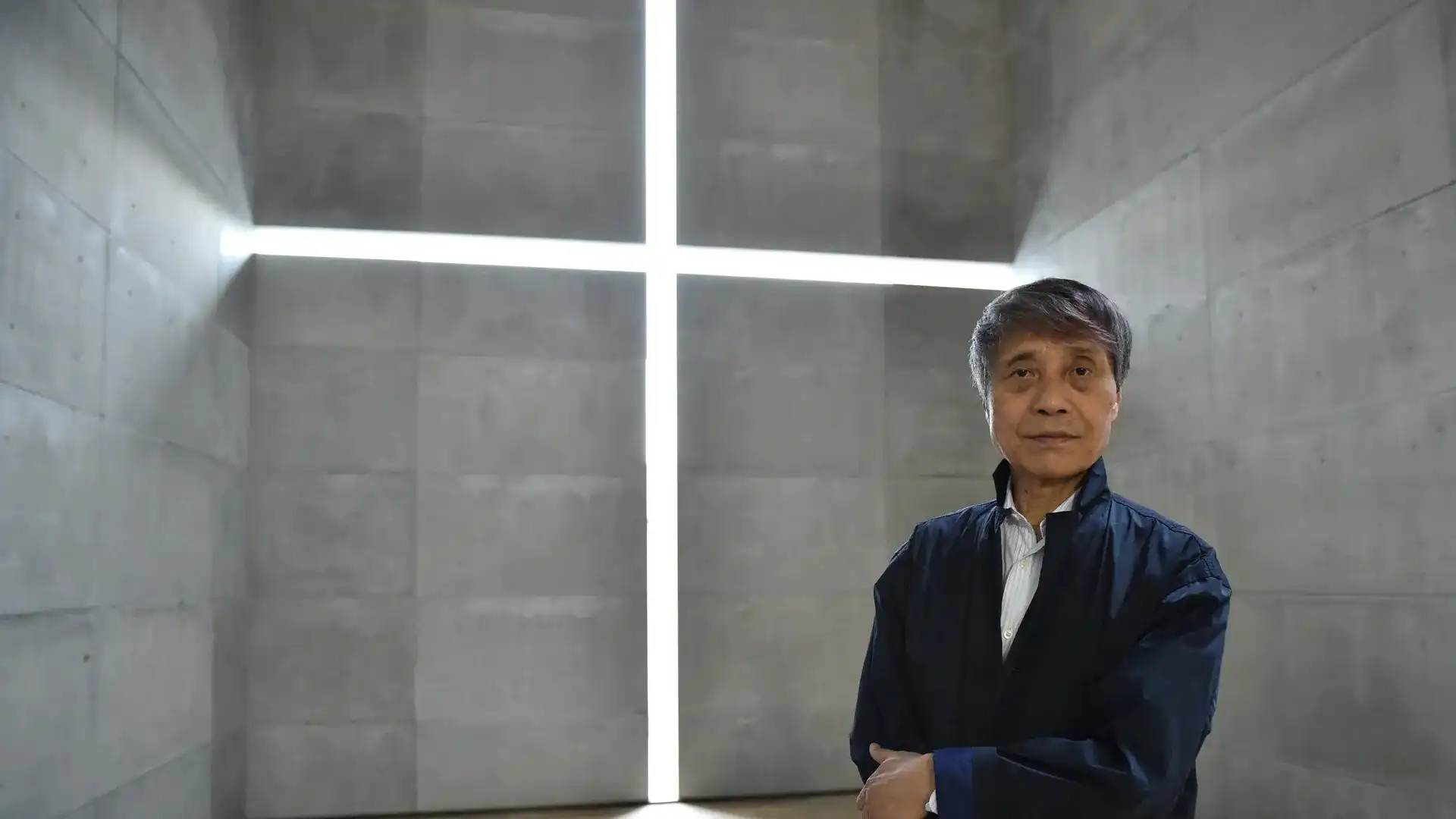
One of the most famous contemporary architects of the 20th century, Japanese architect Tadao Ando is known for his minimalist, simple yet profound designs. Self-taught without formal architectural education, Ando has developed a unique and independent way of thinking.
Known for his precise and secure use of concrete, Ando creates architectural works that skillfully combine light, space, and water. Tadao Ando, who emphasizes minimalism and simplicity in his structures, skillfully combines natural materials such as wood, stone and glass with concrete in his designs.
Church of The Light

Location: Osaka, Japan
Year: 1989
One of the most famous structures of the 20th century, Tadao Ando’s Church of The Light is a work that perfectly reflects the minimalist approach and use of concrete. Ando, who blends minimalism with spirituality, shaped his work with concrete, glass and natural light, which has an architecture that transcends the physical and touches the soul. While the church has a simple form, the large cross-shaped window in the wall creates dynamic plays of light and shadow as natural light enters the interior.
Zaha Hadid (31 October 1950 – 31 March 2016)
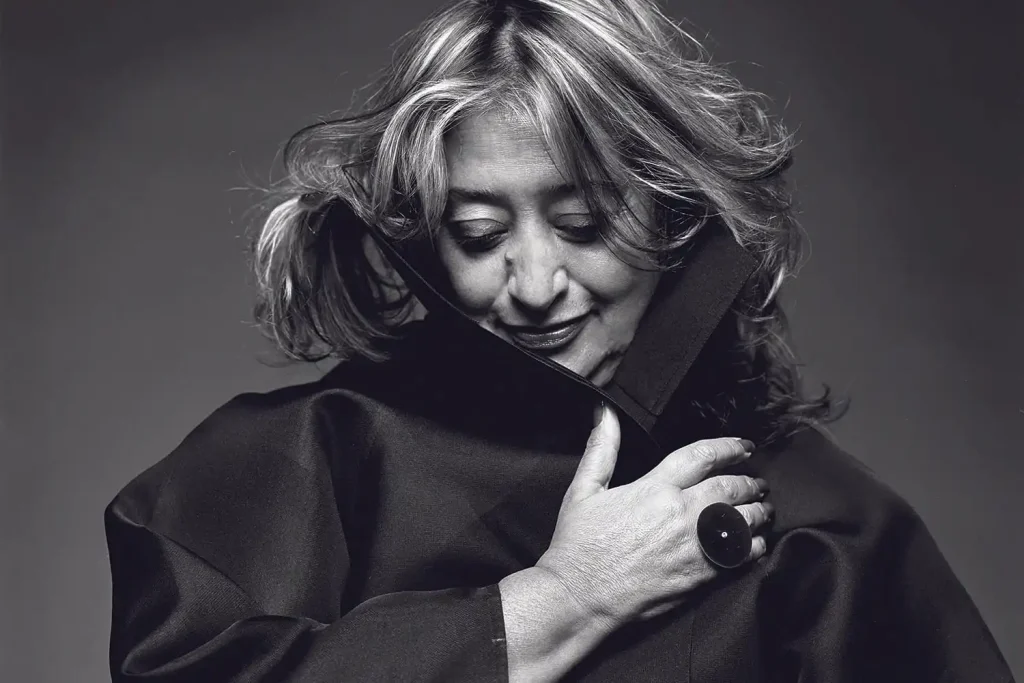
Zaha Hadid, an Iraqi-born British architect who revolutionized architecture with her deconstructivist approach, is one of the most famous architects of the 20th century. Known for her unconventional forms, fluid lines, and bold aesthetic language, Hadid brought a new breath of life to the world of architecture. By pushing the boundaries of modern architecture, she created radical designs that challenged traditional norms.
Zaha Hadid, who liberated architectural geometry and gave it a brand new expression, designed spaces in unique forms that blurred the known boundaries with geometry.
Vitra Fire Station
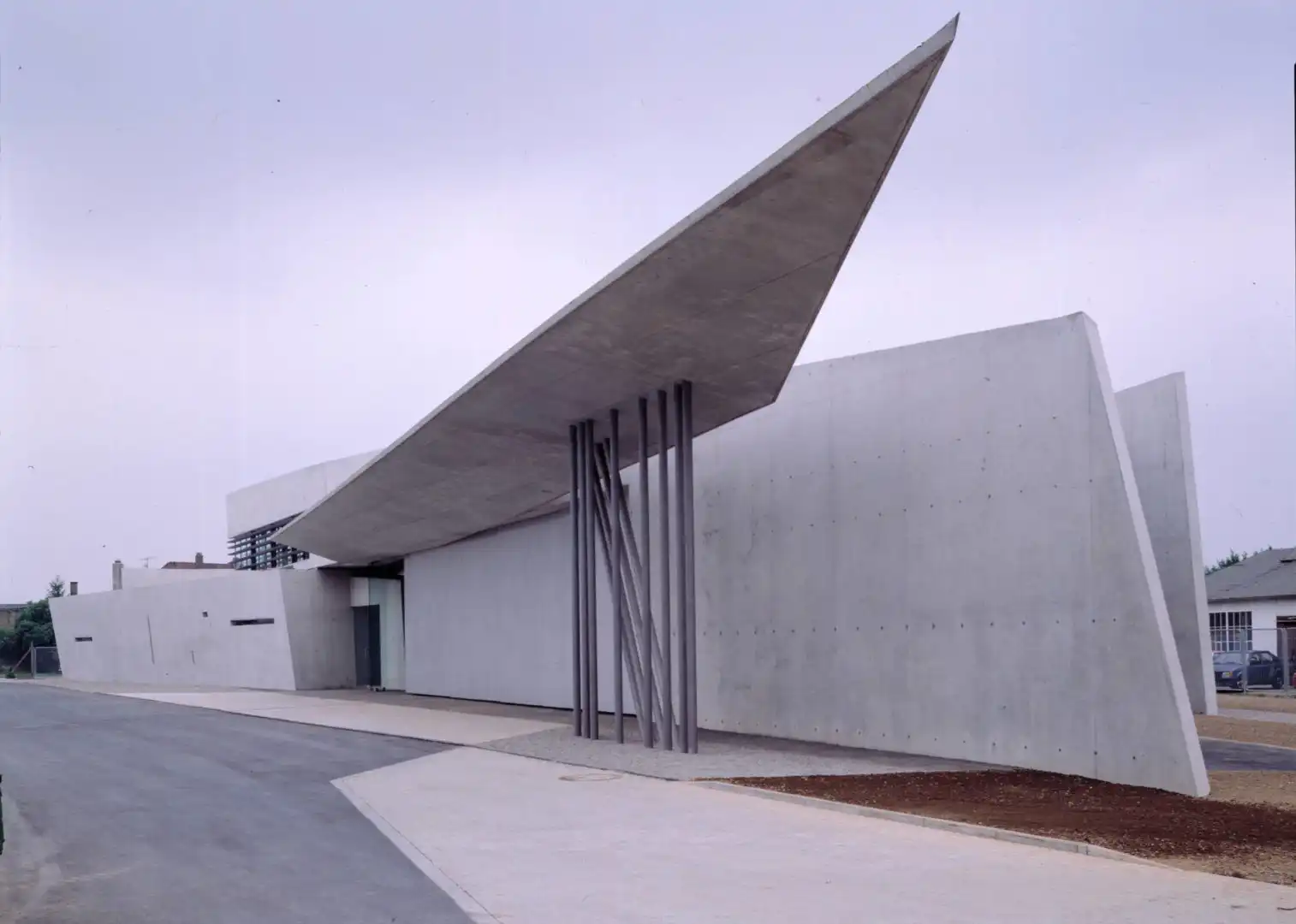
Location: Weil am Rhein, Germany
Year: 1993
The Vitra Fire Station, Zaha Hadid’s first built structure, is a famous structure built in the 20th century. The station, which has a fluid and organic design language seen in many of Hadid’s structures, has a curvilinear and flowing design that rejects the rigid cornered modernist architecture. The station, which is an early example of Parametric Design, was created with cast-in-place exposed concrete.
Now Stay Ahead with PAACADEMY
Check out the workshops at PAACADEMY-these are a good way to get your hands on the latest digital design tools. The industry experts leading the sessions are here to help you keep your edge sharp and inspired in this ever-changing field.




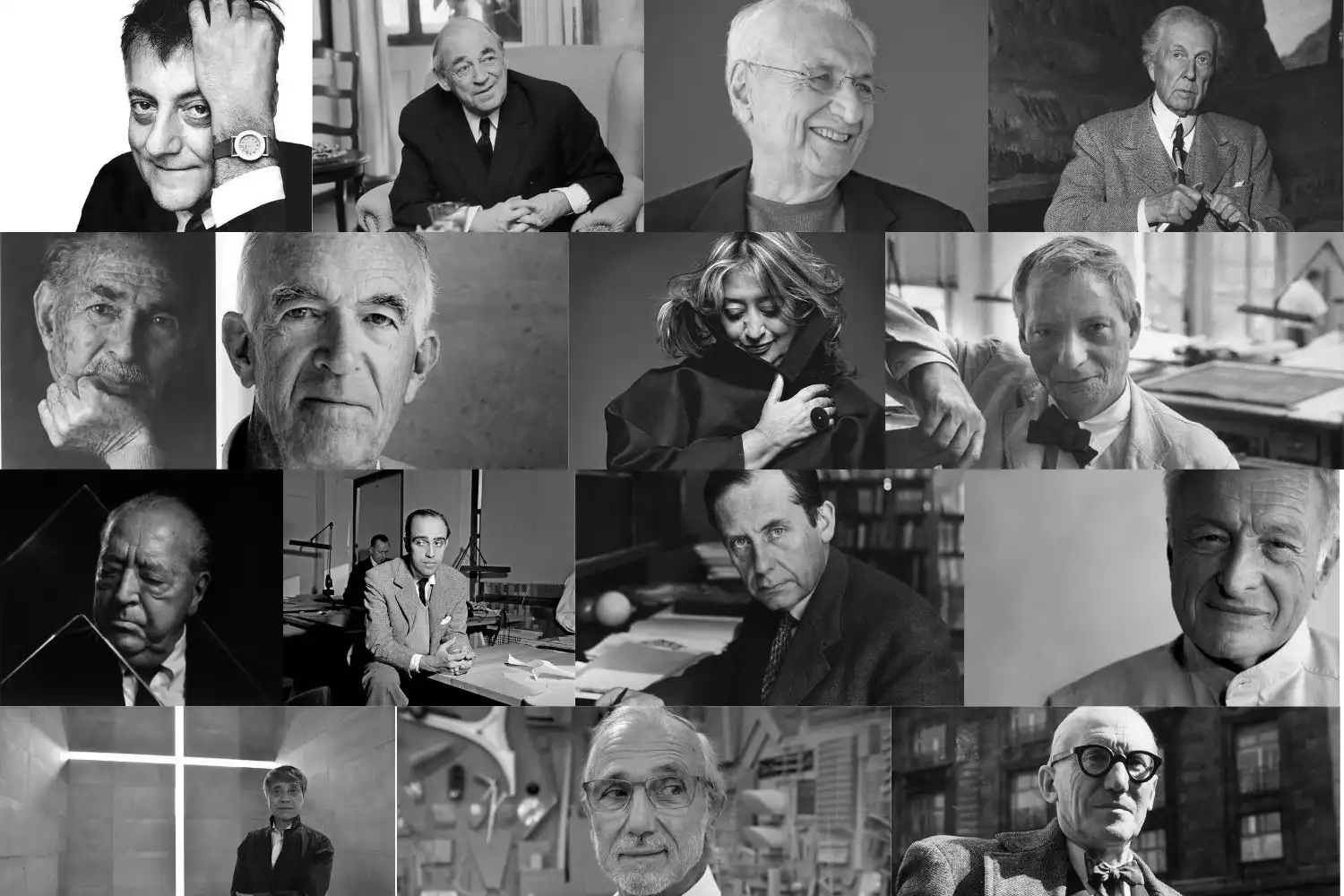

































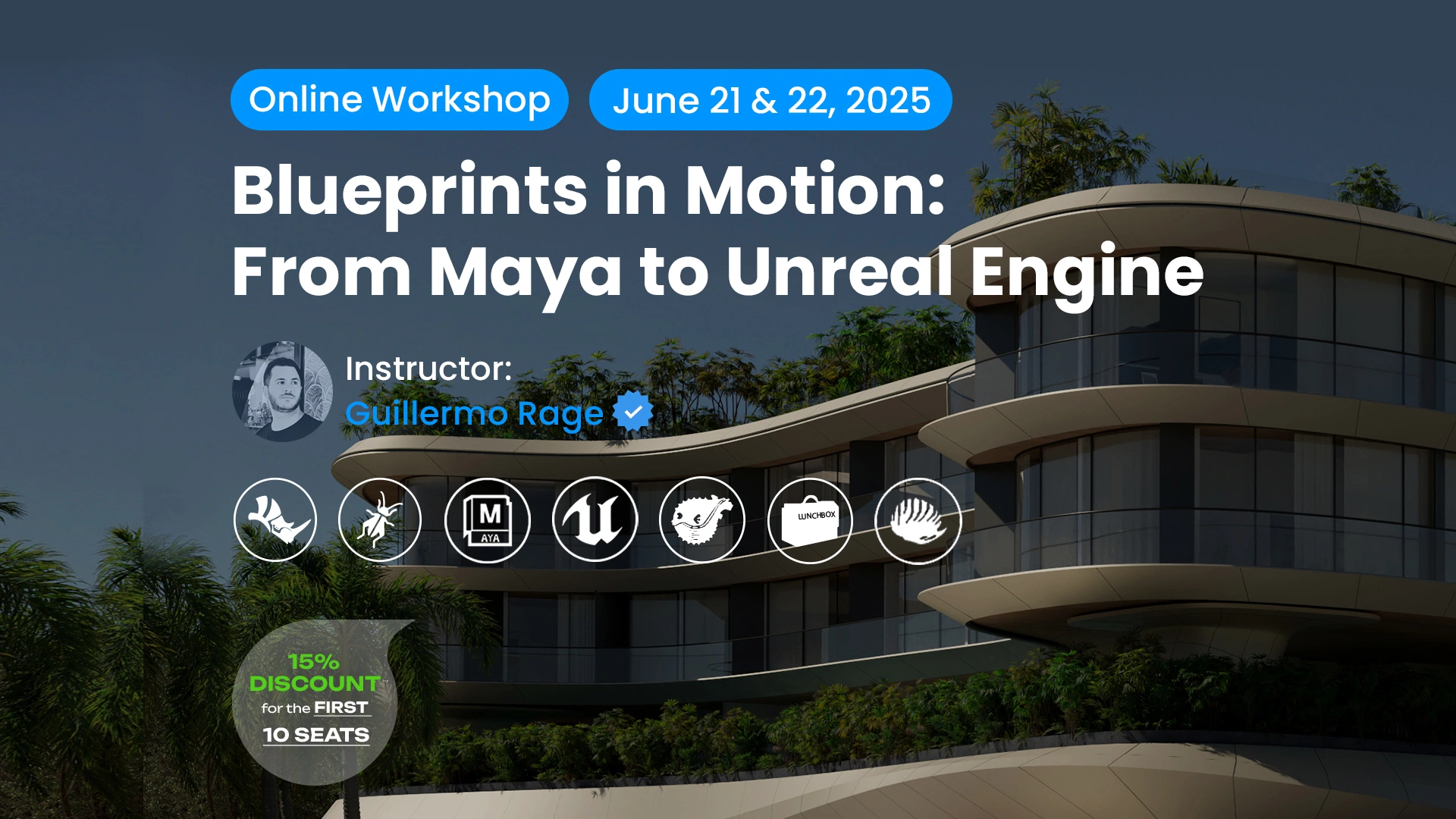












Leave a comment